Eaglenest - A Birding Paradise
- With SoulBirders
- May 3 to 10, 2024
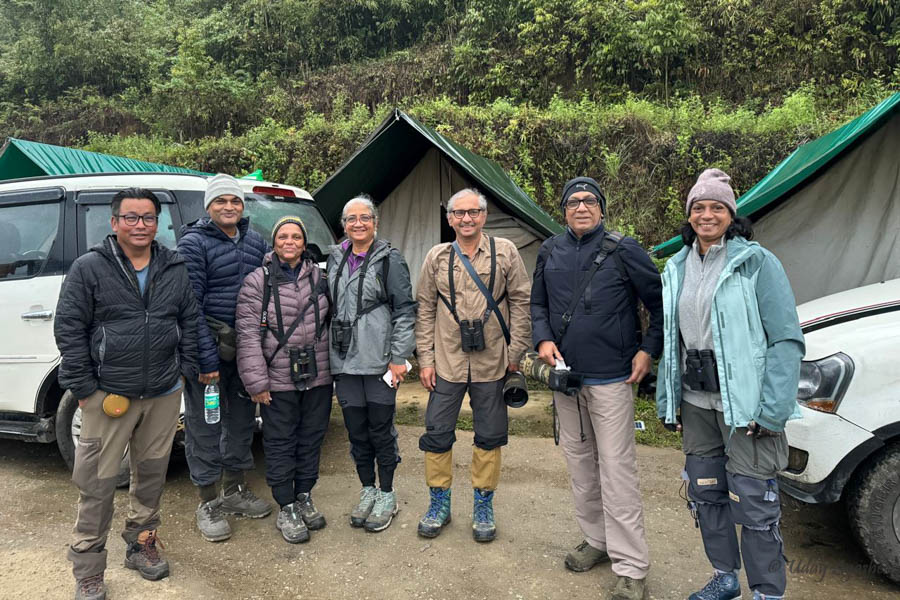
About the Trip ...
Eaglenest has been part of discussions among the expert birders and many of them suggested visiting this place. But the groups that I generally go with, did not have any planned trips to Eaglenest. Finally, my opportunity came when Clara decided to arrange this trip in May (the trip was finalized in Nov’23 itself).
In the past, I had visited a few locations in Arunachal Pradesh (Walong, Mishmi, Namdapha, and Pakke) but this one I heard was different and I was likely to see many new bird species here (despite my species count being 900+ before the trip).
Preparations Before the Journey
Before the trip, I started my regular preparatory work (like finding out possible sightings using eBird, checking on the typical weather in the regions we will be visiting, understanding the experiences of the people who have already visited this place, etc.). The biodiversity there seemed to be very good but the only possible problem was light for photography. Rain, clouds, and mist may play a spoilsport from the photography point of view.
When I checked the list, there were not many birds of prey (raptors), so the obvious question was, why the name Eaglenest? On further check, realized that the name for the sanctuary had nothing to do with any Eagle species but it was because of the Red Eagle Division of the Indian army which was posted in the area in the 1950s.
About 15 days before the trip, the WhatsApp group was formed. The first dampener that was discussed was the weather forecast during our trip days. A lot of rain, and a cloudy atmosphere were predicted but there was hardly anything we could do about it (other than carrying suitable rain gear).
Rains would also mean an increased menace of leeches. Besides that, out of the seven night halts, 2 were to be in the Bompu camp. There we would be staying in the tent accommodation (with the toilet blocks as well as the dining rooms at 20 meters distance). With rains sometimes the tent floor gets wet, so for protection, we were advised to carry a plastic sheet (to keep our bags safe from dampness).
On 2nd May, our flight reached Guwahati just before midnight. Our journey to Eaglenest was to start the next morning, so we all decided to have a hotel stay in the city. It was better to have a good rest for a few hours rather than waiting at the airport.
Day 1: Travel to Tenga
Today was likely to be an all-travel day but before we moved out of the city, we had plans to see a lifer bird. We got up early and were ready to start at 5 am. Our guide Mr. Lobsang Tsering was already waiting. We quickly loaded our bags into the 2 vehicles and started our journey.
Our immediate destination was a huge garbage dump! No jokes, we directly drove into the trash hills full of foul smell. But to be fair, our guide had already warned us about it.
As soon as we reached the spot, we could see a lot of Greater Adjutant storks standing on the garbage dumps. It was a little misty, but we quickly got out of the vehicles and went about photographing them.
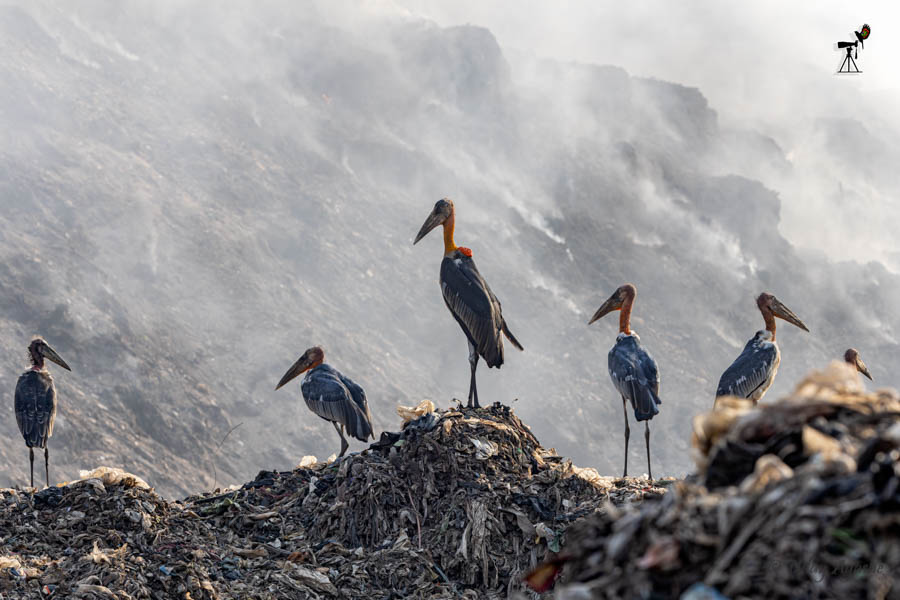
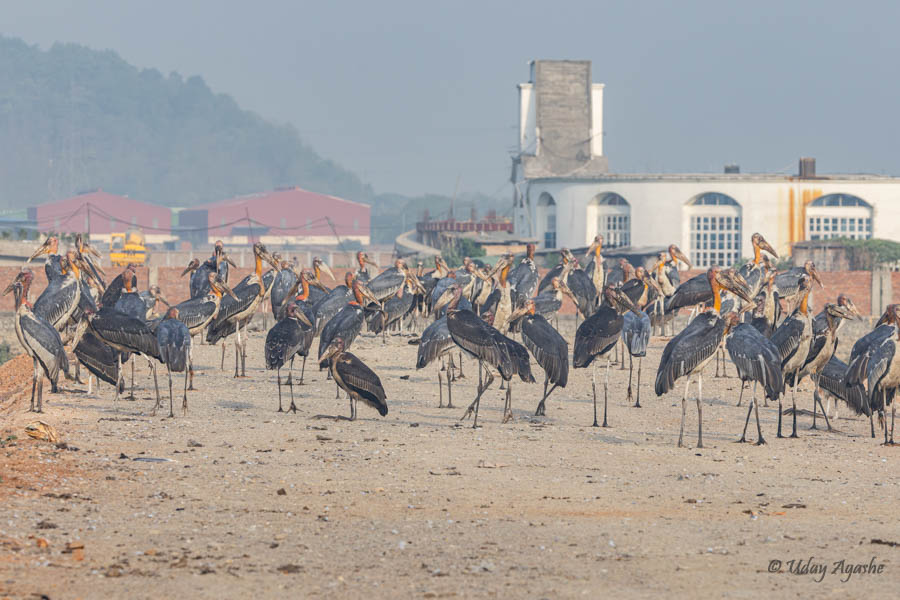
These Adjutants can be easily categorized as the ugliest-looking birds and here they were in large numbers. As we were trying to capture some action, our attention was drawn by one stork in the middle of the water body, as it was trying to gulp some prey. It was far, but I started capturing the action. From the distance, it appeared like a snake kill. When I saw the photos on the large screen, I realized that the poor bird was trying to gulp a rubber strap that is used in the slippers. It can be clearly seen in the picture here. In the garbage, these birds must be routinely eating many such harmful things (rubber, plastic).
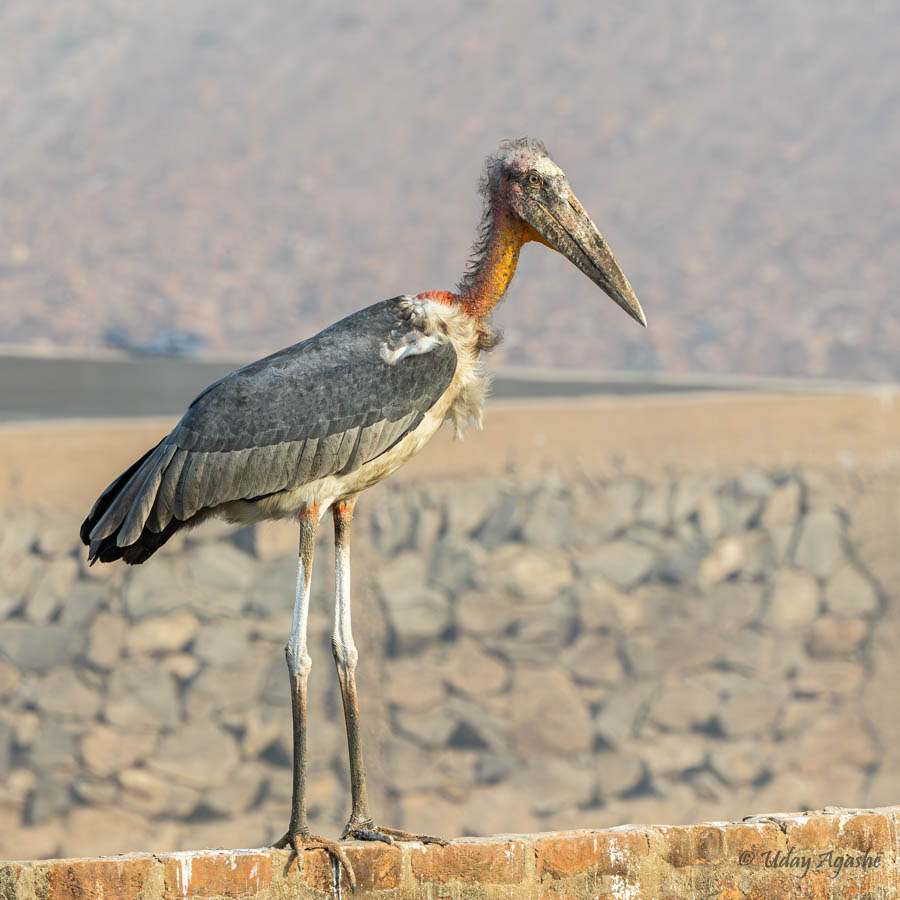
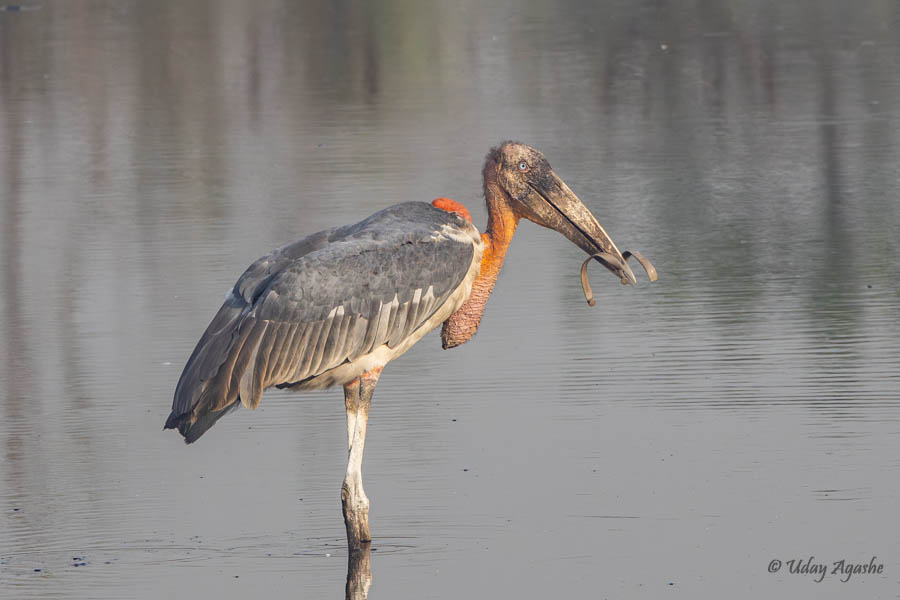
By 6:30, we were through with the Greater Adjutant photography and we started our actual journey (till now it was just a detour within the city). Our next stop was in Mangadai town for breakfast (and also the petrol pump nearby). Here we stopped at Dhaba NH52. An excellent place to have breakfast/lunch and it must be a common halt for all travelers going to Eaglenest as well as to Pakke/Nameri tiger reserves. On entering, I remembered the place as I had stopped here in the year 2022 while going to Pakke. This is a good joint and has a variety of eating options to choose from.
At noon, we reached the Bhalukpong town which is where we entered Arunachal Pradesh (from Assam). We had to stop at the checkpoint for a routine check. Our permits (for entering Arunachal) were already in place thanks to Lobsang, so we did not have to wait long. Little further, we had another stop. This time for lunch. Once again the place seemed to be a favorite for tourists. It was full and we had to wait to get seats. Lunch was a simple rice-based local meal.
As we started our journey into Arunachal, there was one noticeable difference. The roads till now, were flat but as soon as we entered Arunachal, it was full of ghats and the hill-cruves. And this is where our birding opportunities began.
Lobsang had a very good understanding of the surroundings (and possible bird species seen) and soon we all got down on the road. We all got excited on hearing the name of Sikkim Wedge-billed Babbler. A skulker, a little difficult bird to photograph but a lifer for most of us.

We waited for about half an hour but today the bird was in no mood to come out. We had to be content with capturing a few common birds instead.


From here on, till we reached Tenga at 4:30, we kept getting down from the vehicles and managed to see a few birds. The roads were good and there was not much traffic, hence we could easily have these stops (without disturbing the other cars/trucks). Unfortunately, none of the elusive lifers were seen.
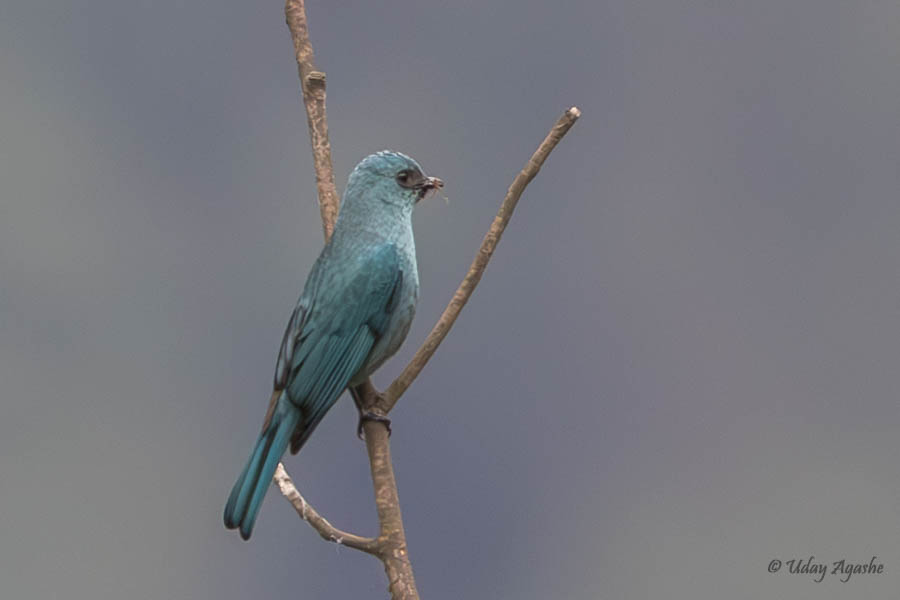

By about 4:30 we reached the Tenga Market (a mere 100-meter patch of road that had all the shops as well as a few hotels and homestays (including our Hotel, the Eaglenest Residency). We were planning to have a 2-night stay at this place. We quickly got to our rooms (tired after the day-long travel) but not before having a nice hot cup of tea at the reception. The rooms were decent, all had a tea/ coffee maker and also a hot-water guiser.
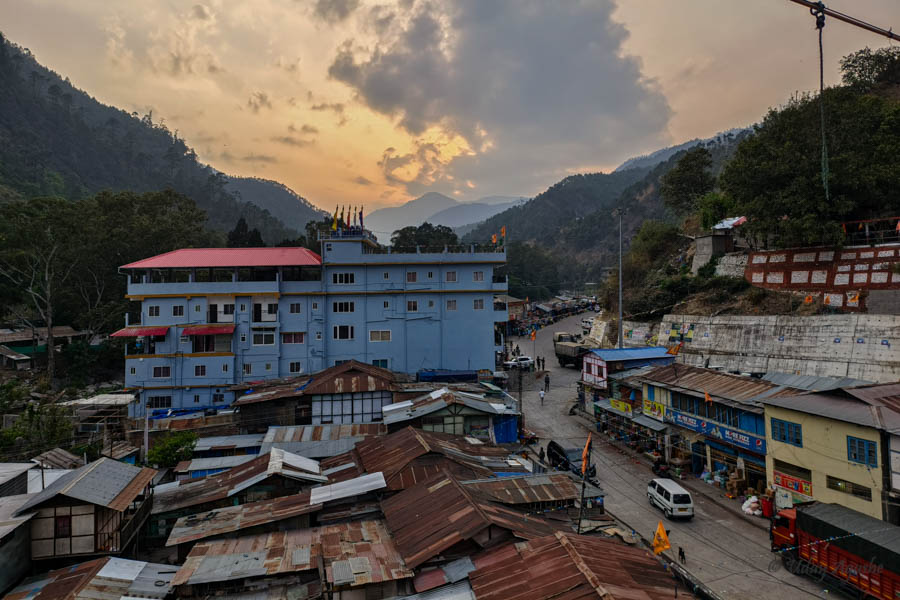

Our day was not yet over as we planned to have a night round for owls and frogmouth. In this region, the day begins and ends a couple of hours earlier so we planned to start by 5:30 (as it gets dark by then).
For the night round, we traveled up the hills towards the Singchung Bugun Village Community Reserve (the place where we would be birding for the next couple of days… but more about that later).
Here again, we searched a lot for the Hodgson’s Frogmouth and the Mountain Scops Owl but other than hearing their calls, we had no luck. Finally, after a couple of hours, we decided to return to the hotel.
Dinner was at 7:30 and our day tomorrow was to start sharp at 5 am (so we quickly went to bed after dinner and had a good rest).
Day 2: The BUGUN County
We started on time and went straight for the Glow Bari area where the Bugun Liocichla can be seen. This being the highlight bird of the tour, let me elaborate a bit on it.
The species Bugun Liocichla is named after the local “Bugun” tribe. As per some scientists, there are only 50-100 birds of this species exist today. The number according to the local guides (who keep moving in this area regularly) is not more than 20! Not just that, these birds can be seen in only a few square kilometers of area (nowhere outside this boundary). It is therefore a very difficult bird to see.
This bird was first discovered in the year 1995 and understanding its ecological importance, the Bugun tribe voluntarily decided to relocate (and keep the area reserved for conservation efforts). Refer to the below picture for more details.

The Glow Bari area is roughly a 30-minute driving distance (all uphill) from the hotel. So by the time we reached there, there was daylight.
Lobsang checked with us and we all agreed that our first target would be Bugun. So, on the way if we see other birds, we should not spend much time there. With that, we went into the picturesque birding track.
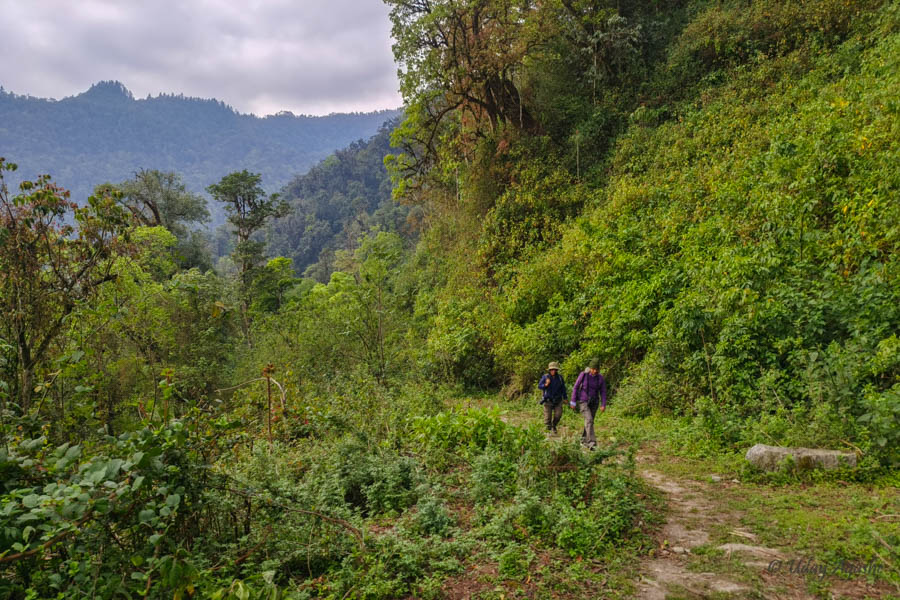

Just at the entrance of the Forest Gate, I saw a laughingthrush (L.T.) that looked like Streaked L.T. On mentioning this, Clara immediately alerted us to take photos even of common birds. It could very well have been the Bhutan L.T. Fortunately, I managed to photograph it in later trails.
On entry, we were greeted by the Ashy Drongo and a few Rusty-fronted Barwings but our attention went straight to the reddish-looking bird that was perched slightly on a higher branch. There were 2 Scarlet finches (males) sitting quietly.

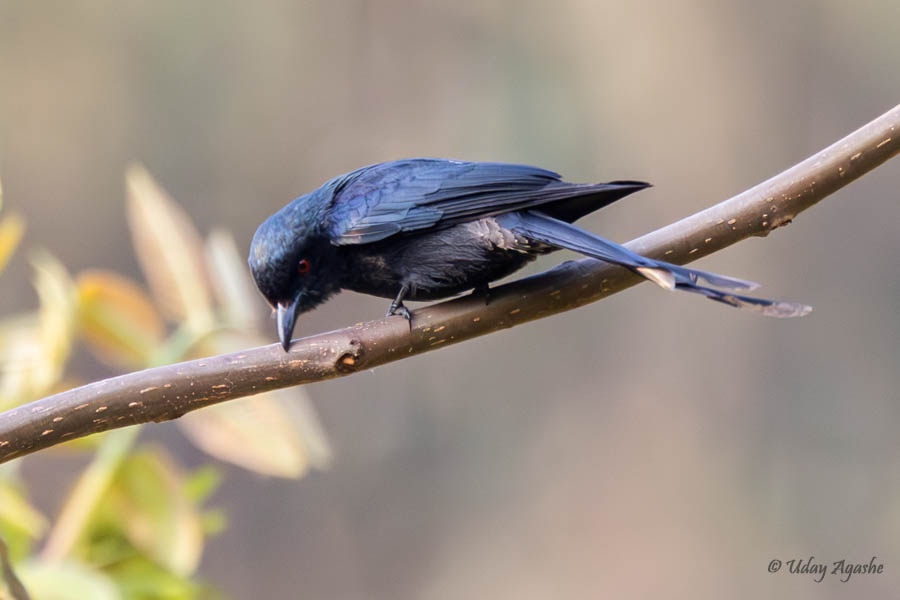
As we continued on the trail, a small colorful bird dashed towards the valley (from the mountainside of the trail). We followed its path till it perched at some distance. We quickly ran near the Green-tailed sunbird. Our attention was then drawn toward a small flock of Rusty-fronted Barwings. This time, they gave us a few photos too.


By then, Lobsang had moved far ahead on the trail. So we all tried moving a little faster but our progress was halted once again by another flock of Himalayan Cutia (the pronunciation here is a little tricky).
These cute little birds were moving quickly from branch to branch (easier to follow using Binoculars than Cameras). And while we were busy clicking them, Deepak shouted aloud as he had sighted a few White-breasted Parrotbills on the slope above.


Although we had agreed to prioritize the search for Bugun, we ended up spending considerable time on the other birds. It was already 7:30 and we were a bit hungry.
It was breakfast time. We had carried the packed breakfast of bread slices, butter, boiled eggs, bananas, and readymade juice. Our drivers helped us with the spread, which enabled us to be back on the birding trail within 20-25 minutes.
After breakfast, we walked a little further onto the trail. Here we were welcomed by the Tickell’s Leaf Warbler’s calls. At some distance, we even saw a nice shade of turquoise blue (Verditer Flycatcher).
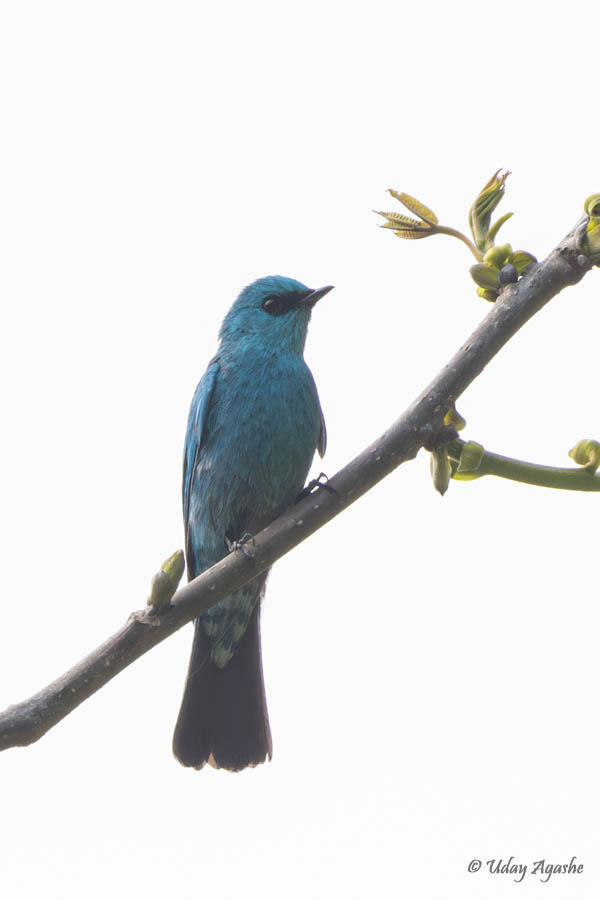

We were happy with the overall birding, but the Bugun Liocichla was not seen anywhere in the trails (we did to-and-fro rounds a couple of times). We checked with other birders on the trail (there were 2-3 other groups that morning) but no one had any sightings (not even calls).
Now Lobsang decided to get onto another trail. So far, we were walking on a relatively easier path but now we were getting down into the valley (with some tricky slopes and rocky terrain). In the past, he had sighted the Bugun on this trail.
As we came down a considerable distance, Lobsang pointed us to a small bird that was moving up on the tree trunk. It was the Sikkim Treecreeper that was moving swiftly foraging for insects on the tree bark (typical behavior of the treecreepers).
Our attention was then drawn by a nice bird song. It was a group of 3 beautiful Sibia. They get the name “beautiful” possibly because of their song, otherwise among the Sibia itself, there are more beautiful species seen.
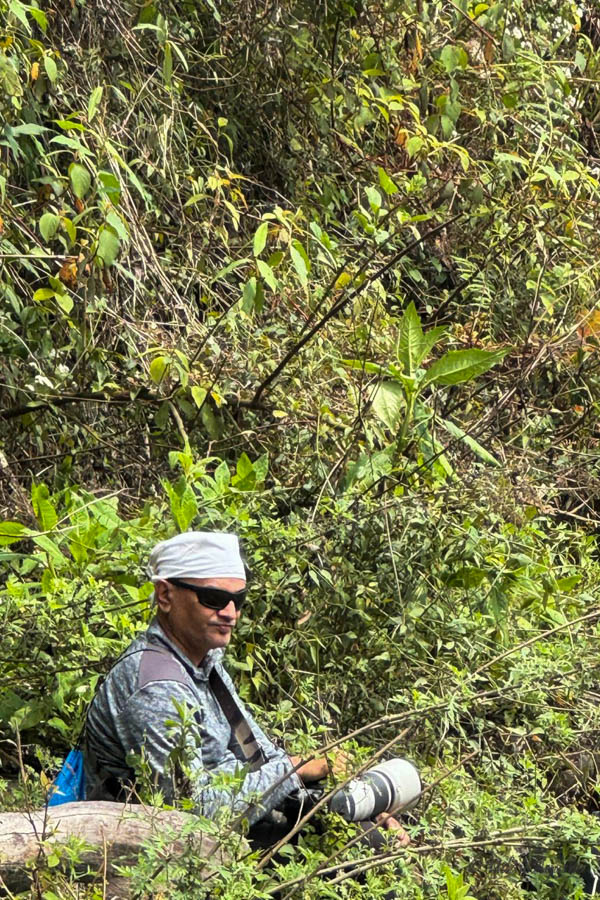

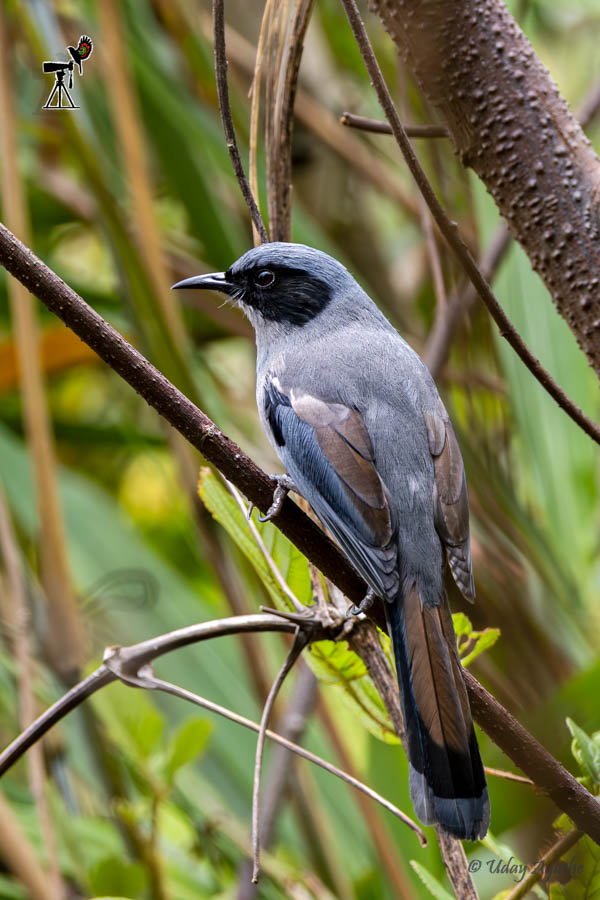
Still no signs of Bugun as we kept walking on the trail carefully (going further down). Just as we were losing hope, Deepak saw some activity on a nearby tree; immediately followed by his cry “aarrey, it's Bugun”. We all looked in that direction, there was a dark-looking bird (in the shadows, the colors were not so clear). I quickly pointed my camera and took a few shots. That was the only photography window available to us because, with the shout, the bird got alerted and flew away.
We tried following the directions and went further in search, but it was nowhere to be seen again. I had to be content with whatever photo I could get, some of us did not even get that.
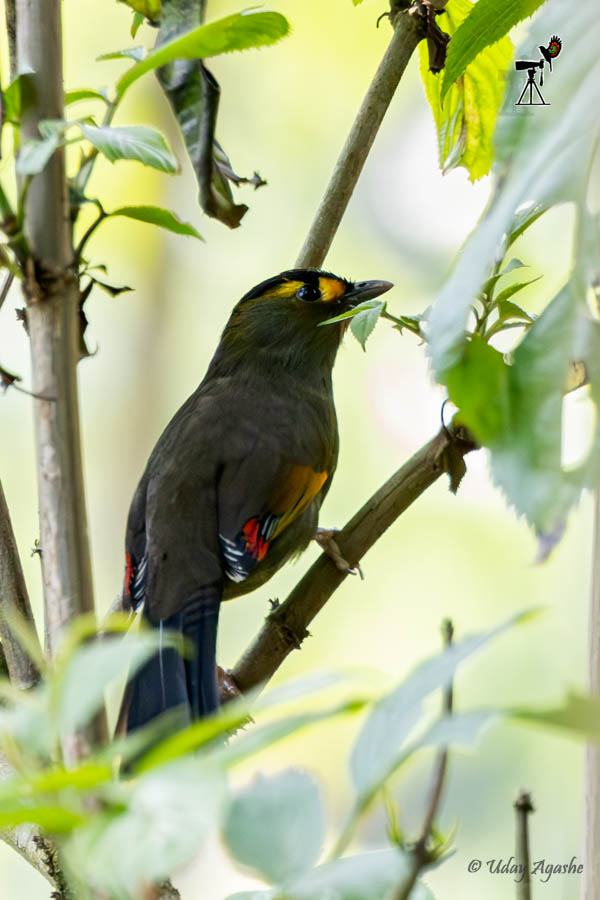
From there we came out on the main path, to see a few other birders waiting. They had heard the bird calls and were waiting in anticipation, we too joined them. But despite waiting patiently for more than an hour, the Bugun did not come out. Finally, by around 10:30, we decided to stop. It was getting hot and in the afternoons, the bird activity is generally low (10:30 here was like noon time).
We returned to the hotel and then decided to take some rest. In the morning session, I had forgotten to carry my cap and the shining sun created some problems for me, so the rest was a welcome break. Lunch was at 12:30 (food here was very good) and we were back again for the trail by 3 (after a nice hot tea).
Once again, we wanted to focus on Bugun Liocichla as the morning sighting was only cursory. As we entered, we were greeted by another song, this time by the Square-tailed Drongo Cuckoo. The song was heard clearly, but we were not able to locate it on that tall tree. Once again Deepak came to our rescue (his sighting overall was very good throughout the trip). We could then get some good photos while the cuckoo kept calling. For this trip, I could not carry the tripod (airline weight restrictions), hence video was not possible, or else this was a good opportunity.
During that trail, we saw a few other species like White-tailed Nuthatch and Drongos, but I also got one lifer, the Brownish-flanked Bush Warbler. Other than that, we just kept moving and waiting for the Bugun to show. There we also met one famous wildlife filmmaker, Mr. Vijay Bedi. He was also searching for the Bugun and was waiting for long hours.


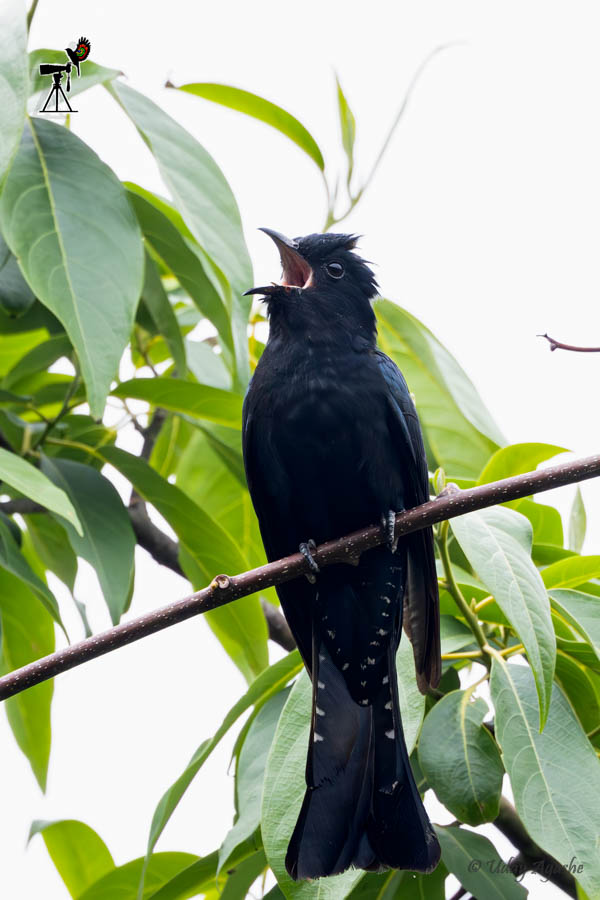
The weather was clear till then but after 4 the black clouds started gathering in the skies and we had to cut short our session. This time, instead of returning to the hotel, we took a tea break at Lobsang’s house. He was staying on the same hills, just a couple of kilometers away. Our idea was to kill time till it gets dark (by 6 pm) and then have another session of night birding.
While we were waiting, I got a lucky break. I saw a couple of crows flying across but their tail appeared white. I asked Clara to check and she quickly identified it as the Eurasian Nutcracker (another lifer). Although the light was fading, we managed to get some photos anyway.
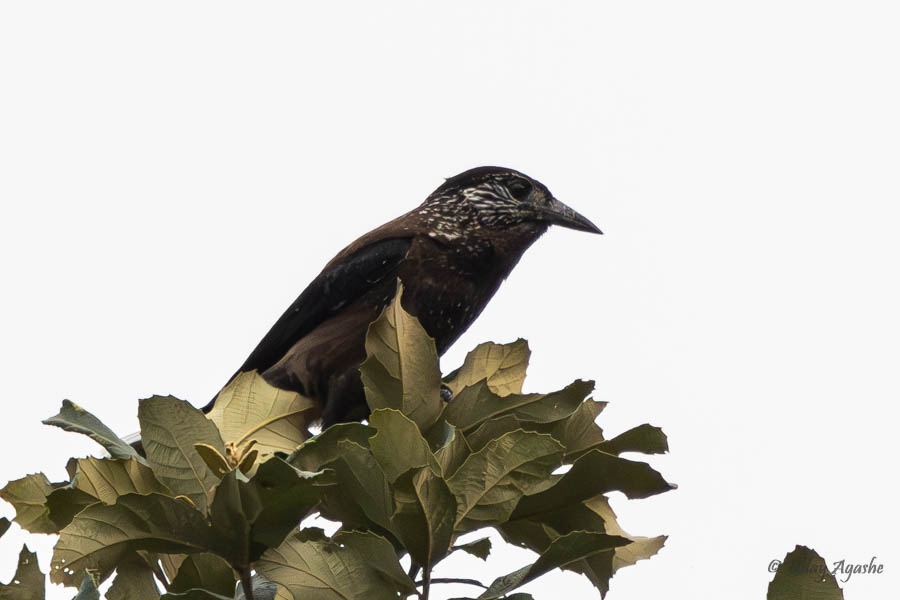
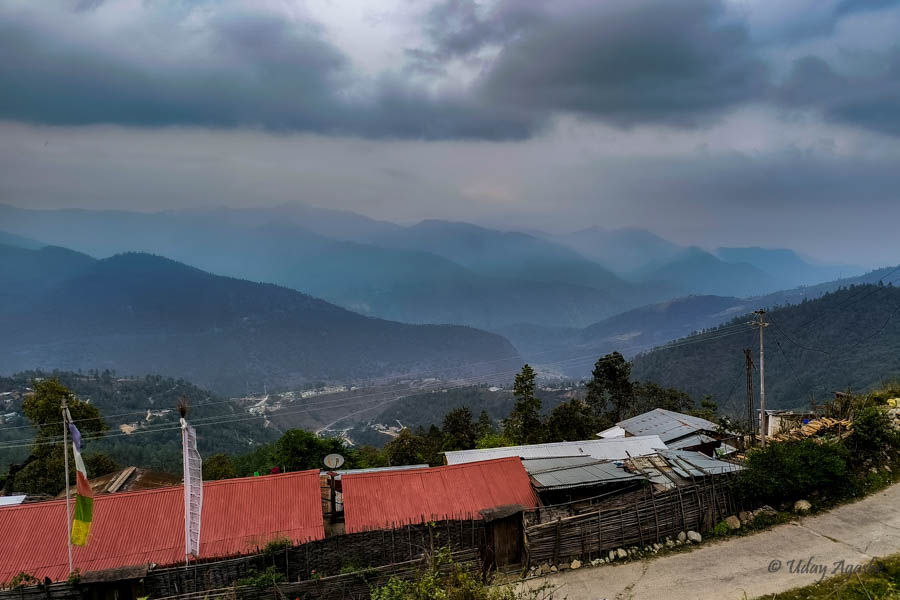
As we were having our black tea, Lobsang came back saying he needed to urgently visit his father as he was not well and that he would not be able to do the night birding session. We all agreed for him to go ahead and that we would do the night trail on our own. Frankly, my only worry at that time was whether he would be able to accompany us for the remainder of the tour.
Our night trail today was a little better than yesterday as we managed to see the Hodgson’s Frogmouth flying (no photos anyway). Other than that, we returned empty-handed to close the day.
At dinner time, we talked about the weather ahead and the forecast was not looking good at all (on all the remaining days). Our plan for tomorrow was to leave once again by 4:30 but this time we had to keep our bag packed (after the session at Glow Bari, we were to go straight for Bompu Camp in Eaglenest).
Day 3: Bompu Camp (via Lama Camp)
Today it was a little cloudy but we started as per our schedule. For the next 2 nights, we planned to stay at the Bompu camp (tent accommodation) which was well inside the Eaglenest Sanctuary forest. So much so that even the roads were very rough unpaved paths. Bompu camp is at 2000 meters altitude and we would be going via Eaglenest Pass which is at 2800 meters. On the way, there is Lama camp (which is also a tent accommodation but it does have an electricity supply). Birders sometimes prefer to stay at Lama Camp instead of Tenga where we stayed. The advantage is, that you are well inside the sanctuary all the time.
But before going to Bompu, we had planned to give another shot at sighting Bugun. And this time, we did not miss capturing the Bhutan L.T. on camera. As we were passing the sanctuary gate, we were all expecting it and it did not disappoint.
Once again we went on the same trail (as the previous day) and the same set of birds was seen again with a few exceptions. Notable ones were the Lesser Cuckoo and Purple Cochoa. Today we saw 2 Lesser Cuckoos, one was seen calling far away down the valley and the other was fortunately not very far.
Our search for the Bugun was not yielding any results but then Lobsang heard calls of Purple Cochoa (to be frank, there are so many birds calling, I can't differentiate them on the field at all). Soon he managed to locate it as well. Not just one, but he managed to find the pair of them. One of them was seen perched atop a tall tree, difficult from the photography point of view but many a time you have to manage with whatever you get (especially in forest birding).
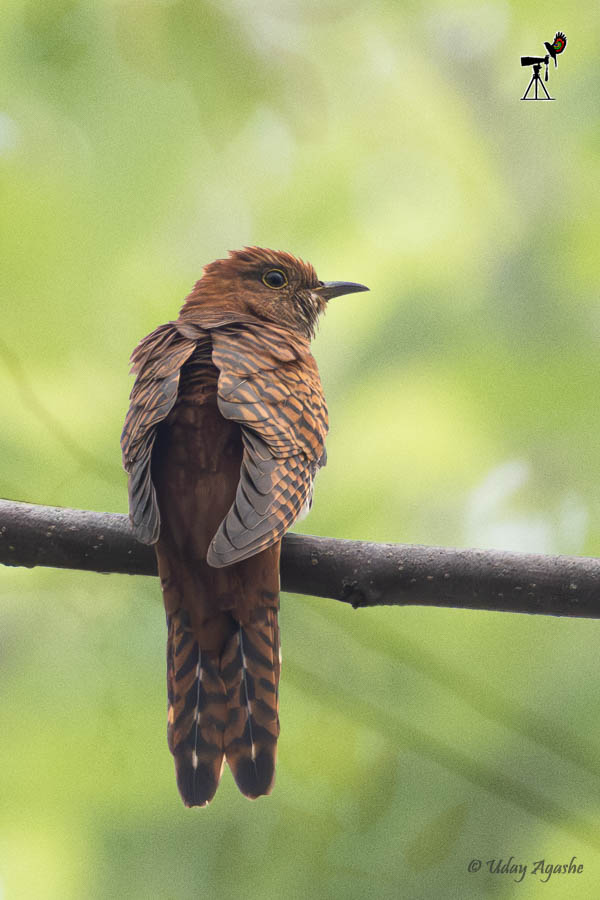
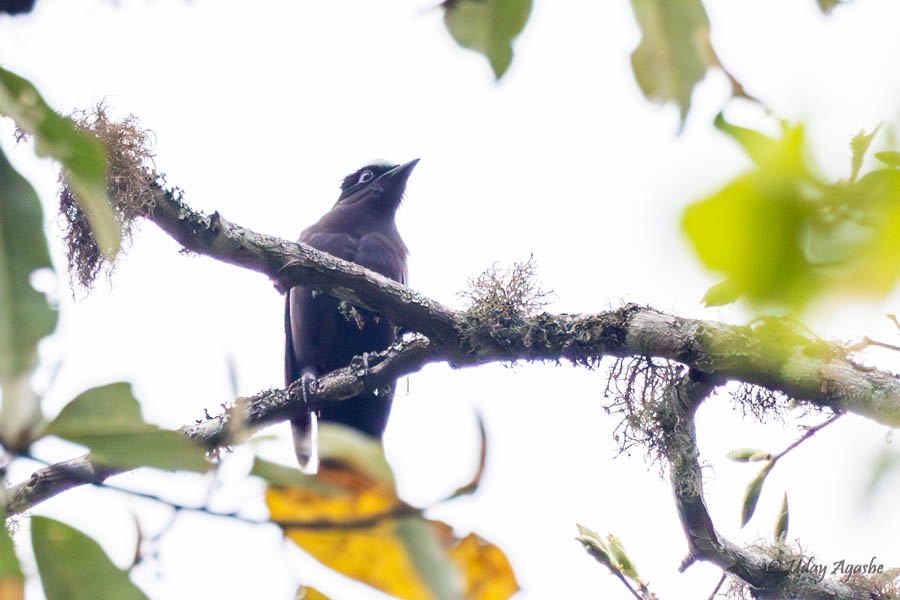
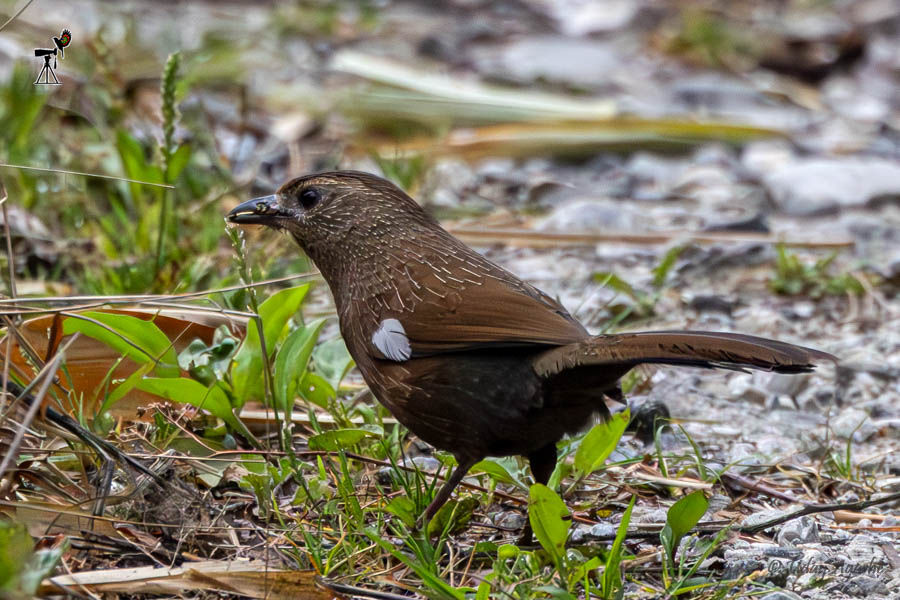
After a couple of hours, we decided to stop our Bugun search as we had to cover a lot of distance till Bompu and there would be birding opportunities on the way too. Before proceeding further, we had our breakfast. Today, we were seated more comfortably thanks to Lobsang. Along with our bags, he had also packed a folding table and chairs (from his house).

Our journey began after breakfast and on the first turn itself, we stopped for birding. This was a hilly road full of trees on both sides (valley side as well as on mountains) and the bird variety here is just amazing.
The reason for the stoppage was calls of the Collared Owlet. It is a favorite call among guides (listening to the recorded calls, small birds come out in the open to mob the Owlet) but this was the owl itself. I got excited as I had yet to photograph this little bird. But despite our minute search (all 6 of us plus the guide were on the lookout), we were unable to find it. And all the time, the bird kept calling. It was like, the bird was daring us “Dhundke Dikhao Mujhe”.
In the meanwhile, a couple of us decided to walk a little further in search of other birds and there were a few spotted immediately. We all then quickly moved ahead to capture the Grey-cheeked Warbler and Indian Cuckoo.
Here, Lobsang had still not given up his search. He eventually succeeded in tracking the owl hidden well in the leaves. He then managed to show it to us as well.
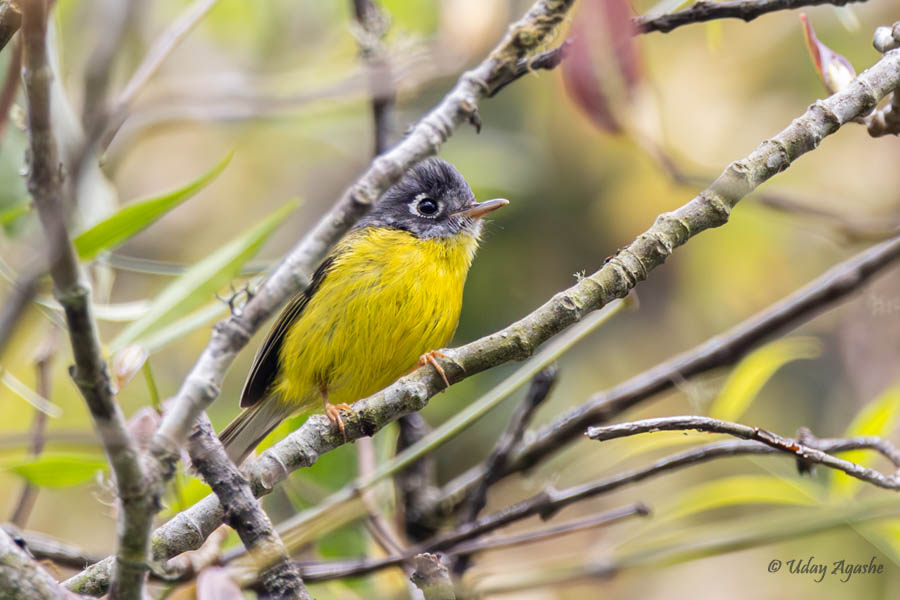
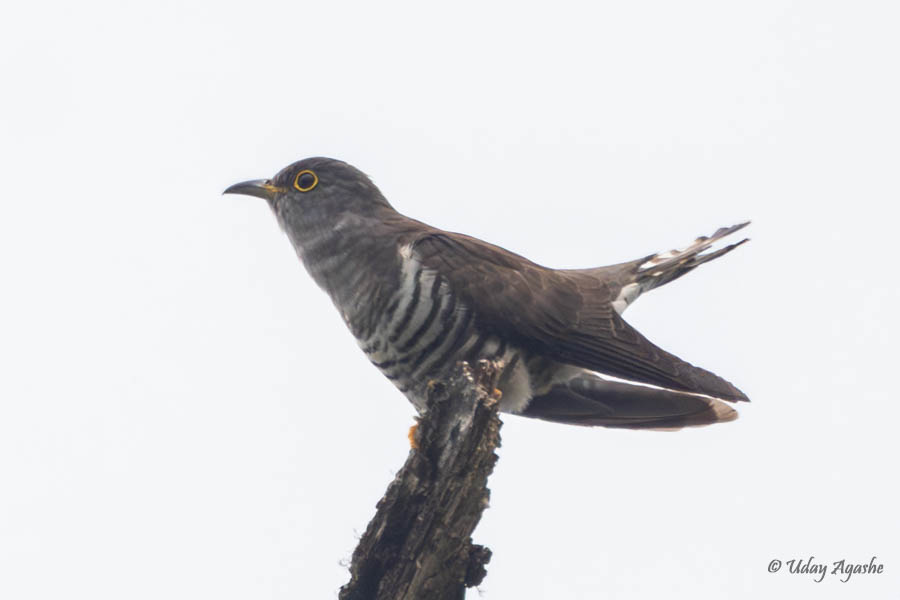
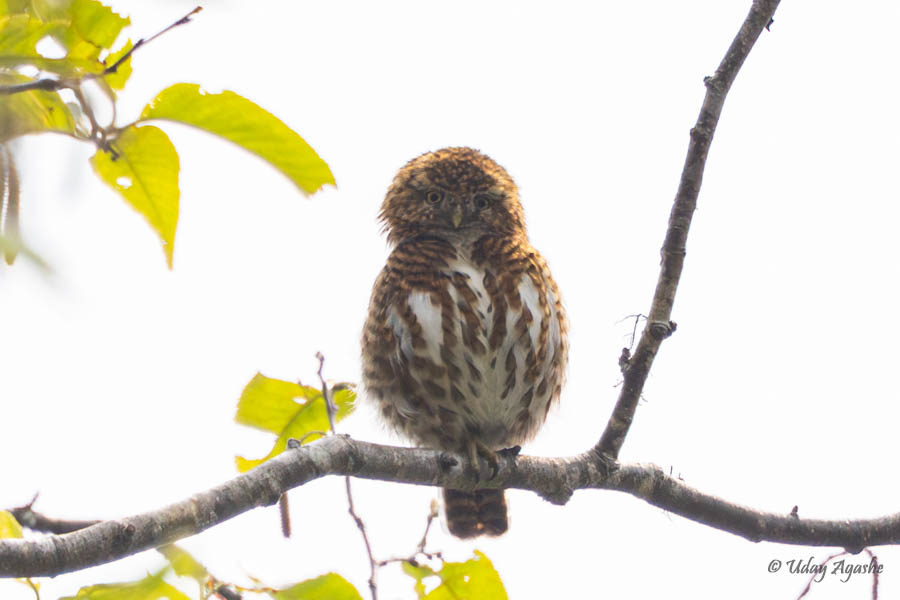
Within 15 minutes we had another stop. This time Lobsang had heard the calls of Shrike-babblers. And after getting down we found two different Shrike babbler species.

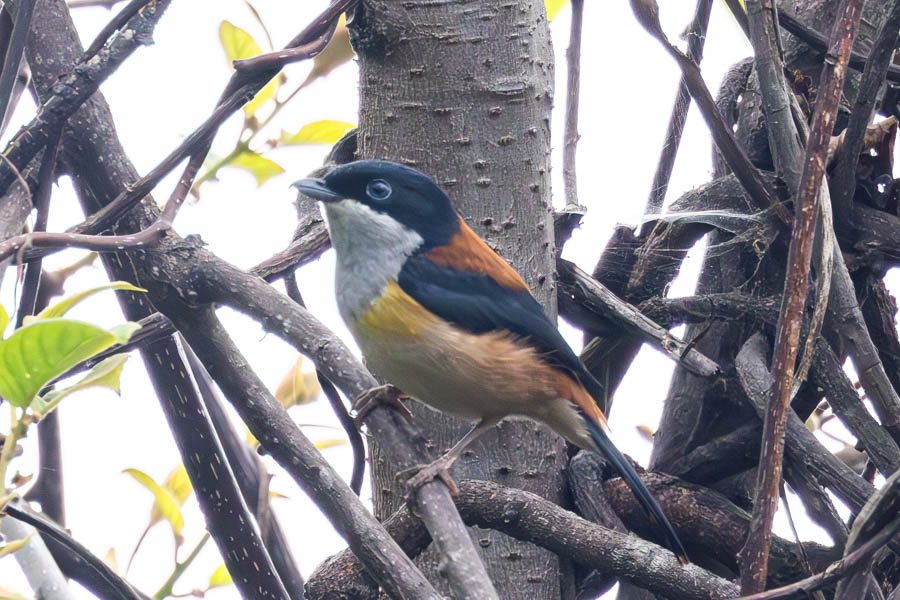
As we moved towards Bompu camp, the tar road soon disappeared and there began our back-breaking journey. But the jungle became more dense and one other change was most of the trees here had a thick covering of moss. The dampness in the air was also noticeable. With little rain, this place would be leech land for sure.
In the next hour or so, we managed to find a few more bird species but none were lifers.

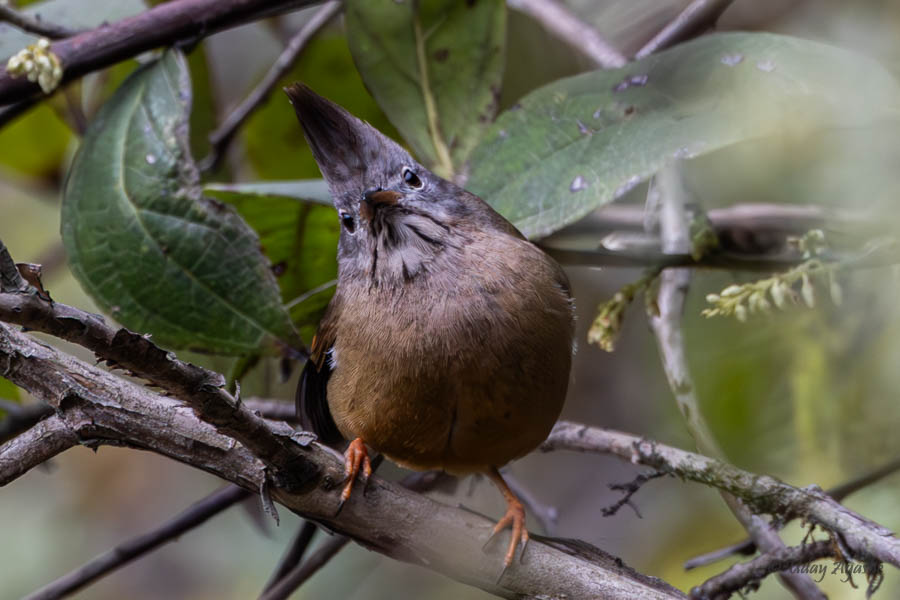
Our main target in this region was the Wards Trogon and Lobsang knew one possible habitat. So we got down there and took the walking trail. It was a small path through dense canopies, we had to duck at times to avoid the branches and leaves. We covered a lot of distance there but once again, with no luck. The only silver lining was the Green-tailed Sunbird that was seen preening.

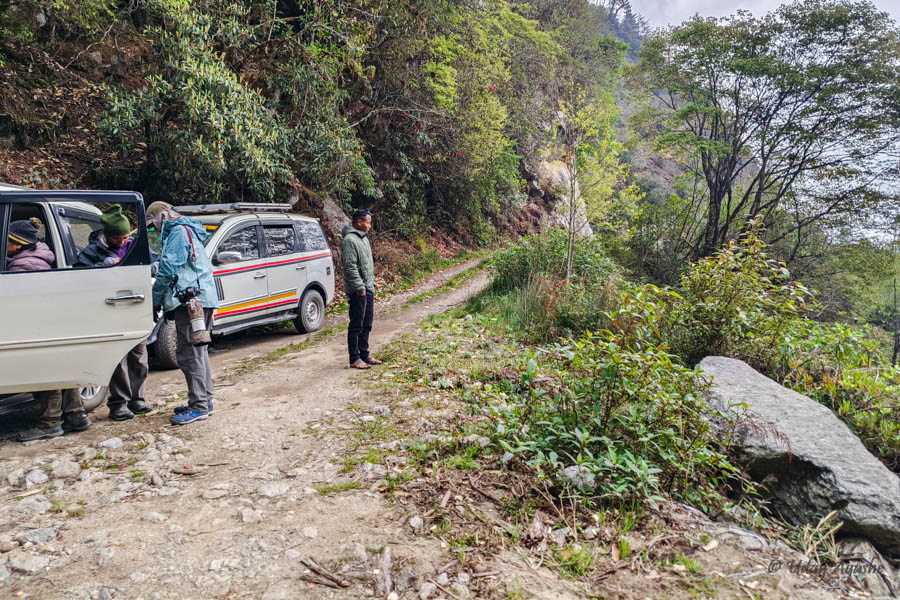
From there on we went non-stop for the next one and a half hours on that deadly road eventually reaching Bompu camp at noon. Lobsang instructed us to be ready by 2 for the afternoon session and that the lunch should be served in 30 minutes.
Got into our tent and unpacked a bit. There was just enough space for the beds and to keep our bags but it looked comfortable. With each tent, they provided a small solar lamp that could be used at night (as there was no electricity). In the dining area, there was a table with lots of power strips, for charging our various devices.

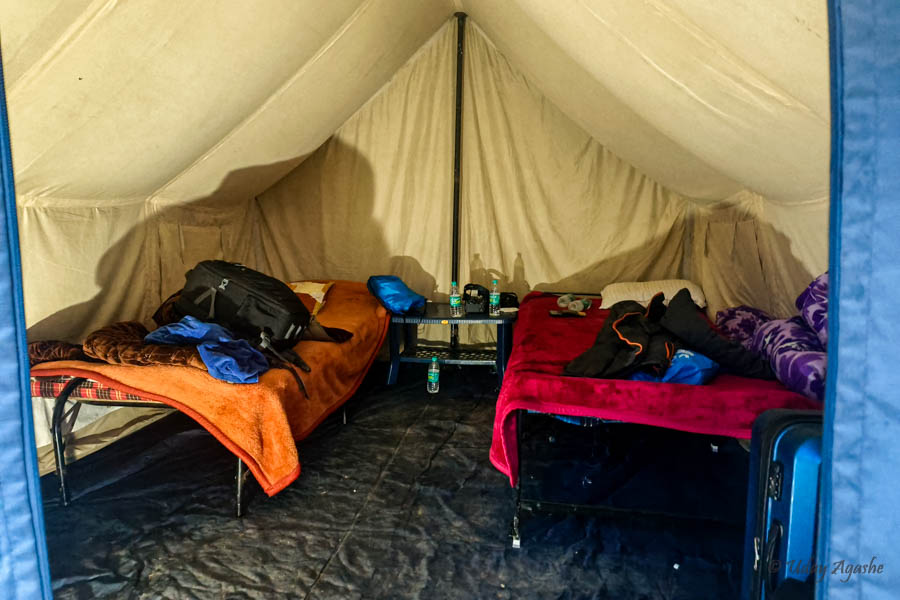
By the time we had lunch (around 1 pm), the sky had become dark and soon even the rains started. Our evening session looked dicey but the rain fortunately was not continuous. So at 2:30, we started with some hope. The air was misty and there was an ongoing drizzle.
Generally in such conditions, the birds do not come out in the open and that is what was happening that afternoon. But even then, we managed to find a few birds and yes, a lifer too.
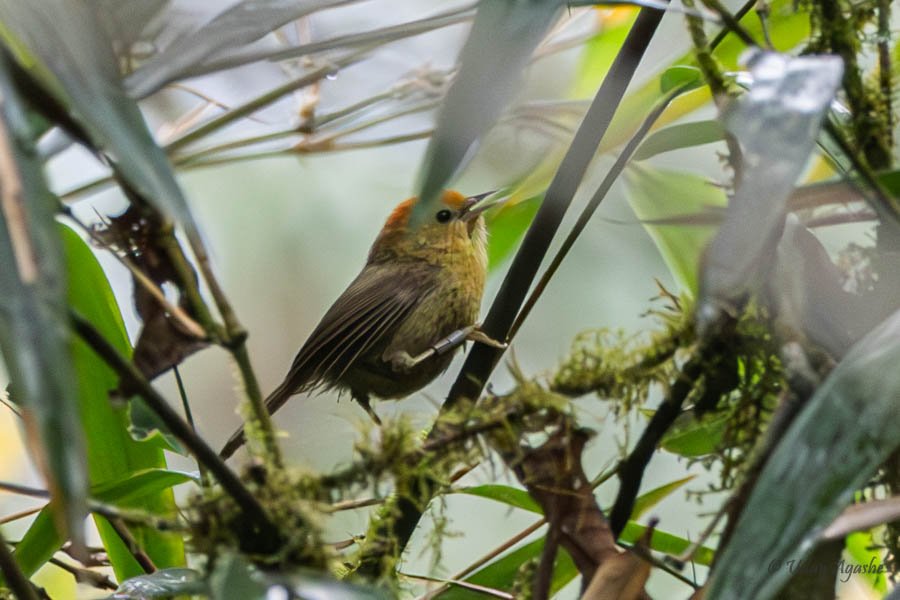

We had more hopes but the rain became more intense and we had to return to the tents. In the evening, we again went out for night birding (well prepared with raincoats and camera covers) but once again the rain played spoilsport as birds did not venture out.
Dinner was ready at 7:30, this time we also had a sweet dish with the meal.
Day 4 – Birding around Bompu
After a nice sleep, we got up fresh at 4:15 (with the help of the alarm). Tea/Biscuits were available in the dining area. Today we planned to spend the entire day birding on the other side of the Bompu camp (opposite direction to where we came from). The arrangements of the camp were elaborate, our packed breakfast as well as lunch was ready before we departed at 5 am. The staff here is very particular, the packed baskets were ready as per the instructions of each guide/group. People start here as early as 4 am (which we planned the next day) so the cooking staff has to be up at least an hour before to ready the food baskets.
We started as planned despite the cloudy weather. Based on yesterday’s experience, we expected rains to start in the afternoon, so even if we get 4-5 hours of birding, we would cover a lot.
Within 10 minutes, we had our first stop. One other group was already there and they had just seen the Sikkim Wedge-billed Babbler. We had missed it on day 1, so we hoped to cover it here. The bird did respond to the calls but it was not coming out in the open. We could observe the movements through binoculars but the photo was problematic (because of low light). We spent considerable time there (more than 30 minutes) but had to be content with just a few record shots.

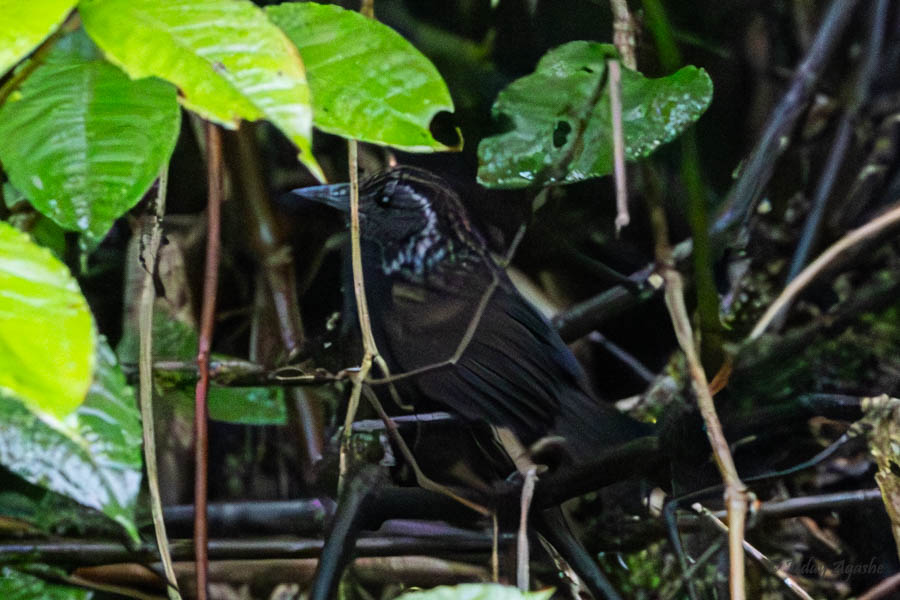
From there, we decided to take a longer walk, hoping to see/listen to more birds that way. But that was just not happening that day. This behavior (birds not coming out in the open) was then seen for that entire day. Maybe the cloudy weather was the reason (birds may have sensed the rain in the air and decided to keep quiet).
There were a few exceptions though. We saw a flock of Yellow-throated Fulvettas and one of them was tagged (there were rings on its legs, done by some ornithologist somewhere). And while we were observing it, I saw a bird coming from the jungle and perched on an open branch. I quickly moved my camera but was finding it difficult to focus on it. A change of position helped there and I was able to get nice photos of the Collared Owlet
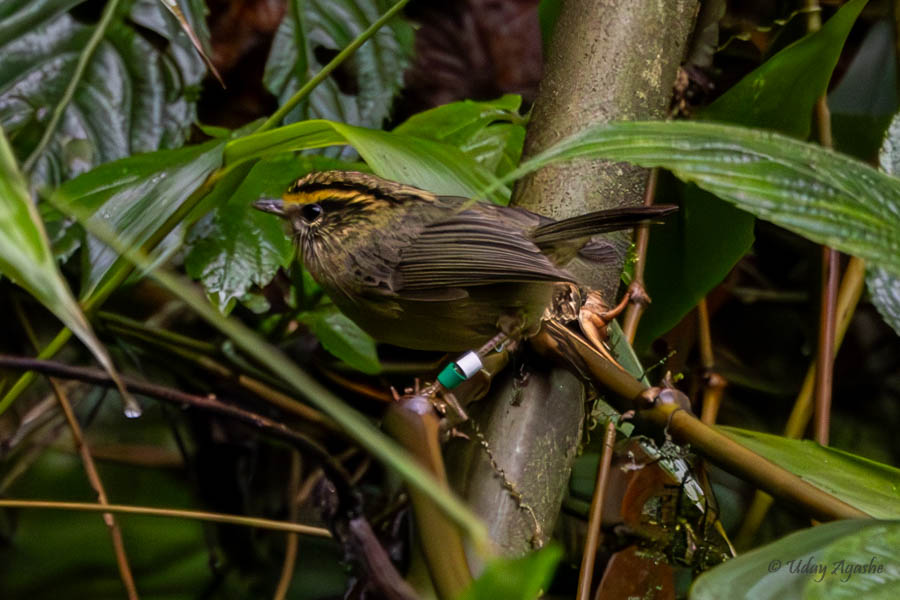
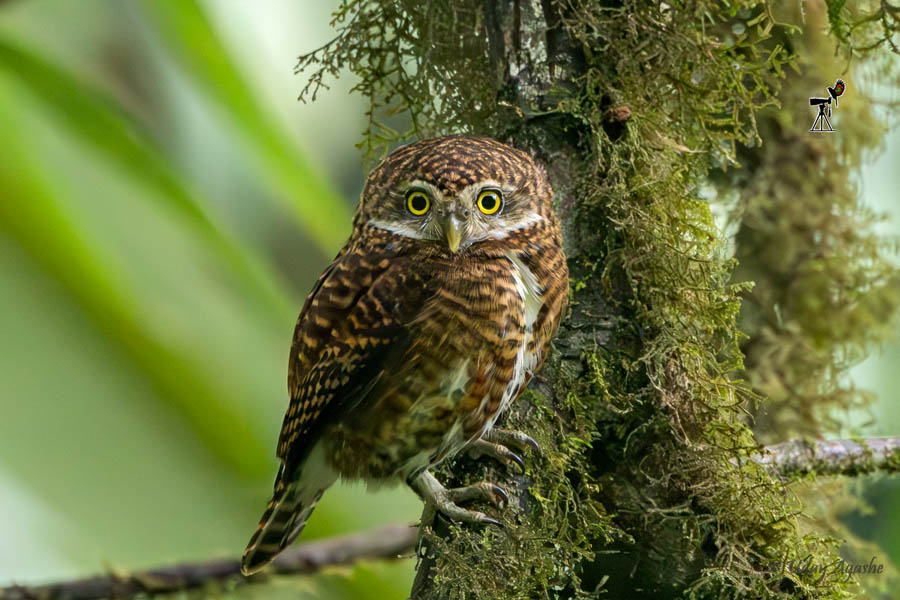
We had our breakfast at one spot by laying down our folding chairs (right in the middle of the jungle). Whatever be our birding experience, the food arrangements were very good.
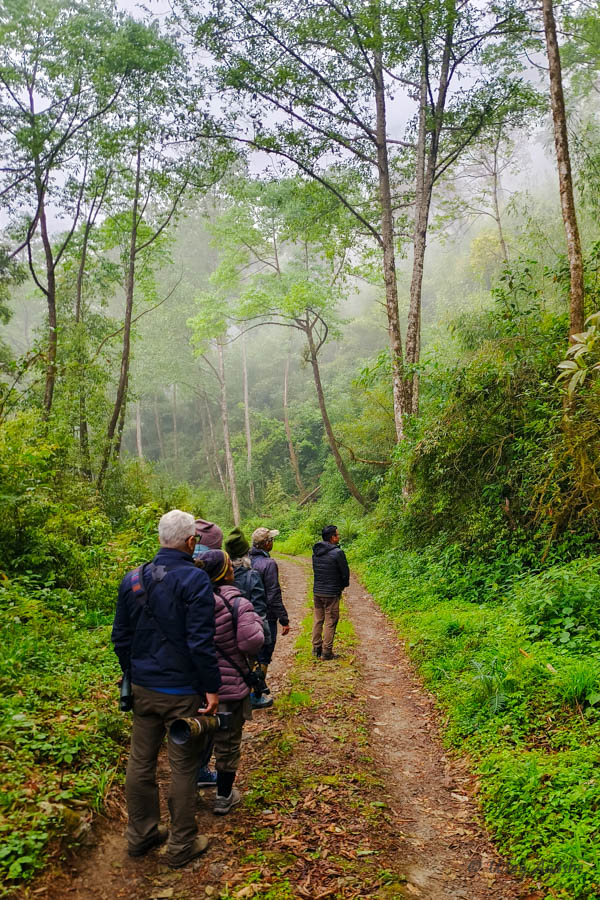

Till noon, we continued our birding trail (we kept walking in between for long distances and taking the help of the vehicles when tired). Our walks were not entirely fruitless as we managed to see the Beautiful Nuthatch (this one is really beautiful as the name suggests), Striated Bulbul, some Pigeons, and a few other common birds.
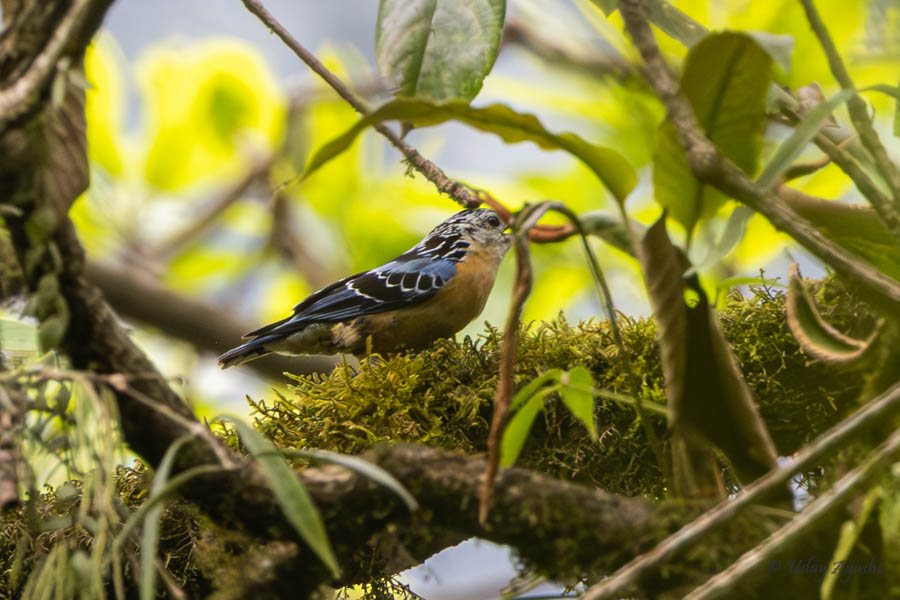
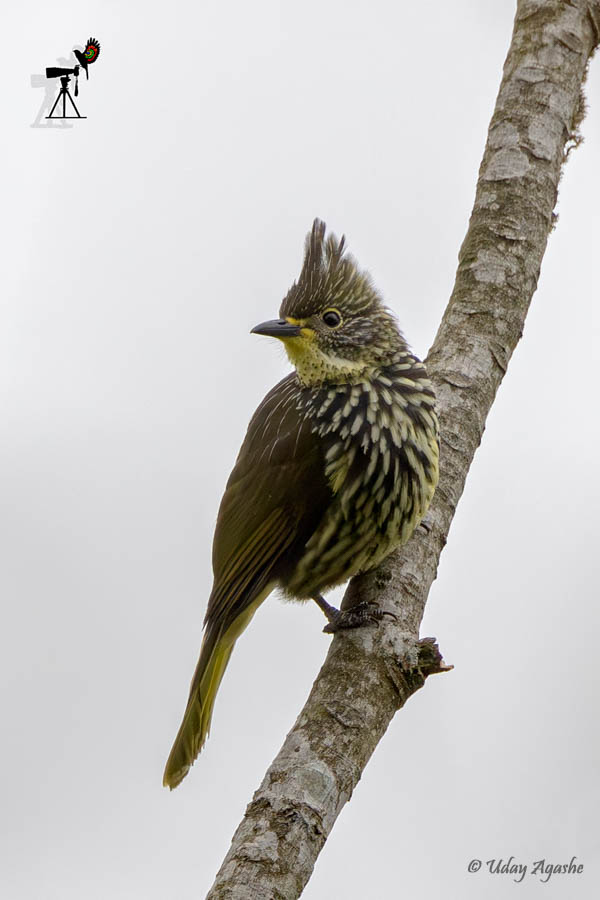
For lunch, we had reached the other end of the Eaglenst sanctuary. There was a small wooden structure built by the forest department (the permanent structure was damaged sometime back by wild elephants). The information board placed there also stated that this used to be a busy place earlier but those establishments were moved to Bhalukpong when this reserved area was notified officially.
The birding is generally low at that hour, so we decided to relax there for some time. But as we sat down after having lunch, we saw a big butterfly flying past us. I thought of it as a Birdwing species (the largest butterfly found in India), so we quickly got our cameras. It took us some time to track it down (hidden behind leaves). To my utter surprise, it was the Atlas Moth (the biggest of the moth species, full open wing span of about 9-10 inches).
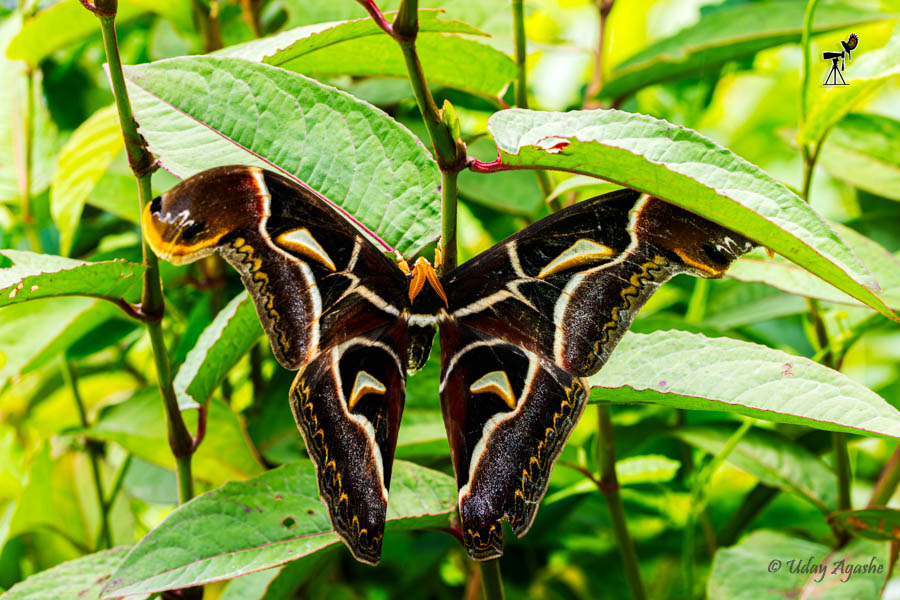
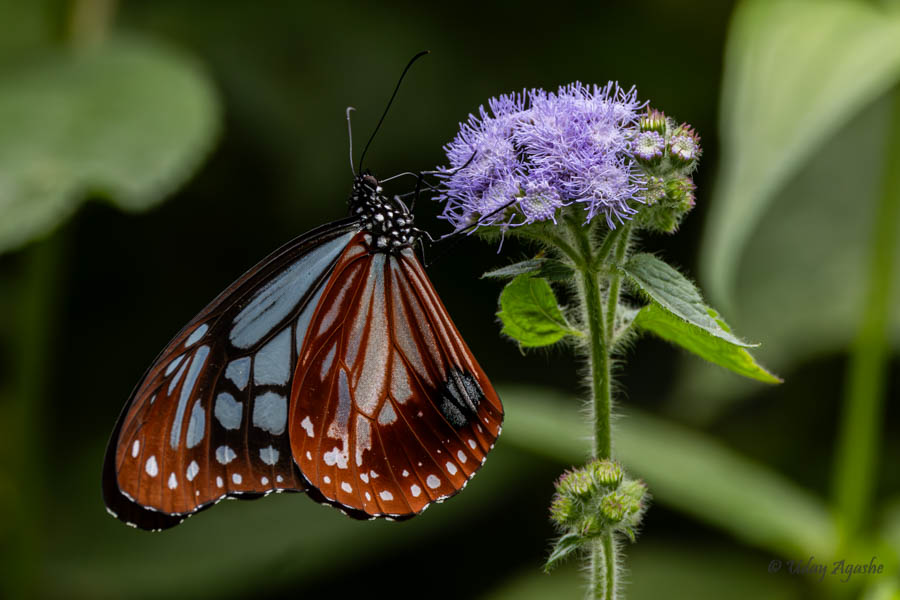
Around 1:30, we began our birding, the jungle was still unusually quiet. We continued our (now) uphill walk and soon came across a couple of Long-tailed Broadbills (the Helmet-bird). Then for a long time, we just kept walking without any bird activity. Just as we were calling our vehicles we heard the calls of a woodpecker, Lobsang identified it as the Pale-headed Woodpecker. Then for the next 20 minutes, the bird kept teasing us with regular calls. Despite all our efforts, we could not see it clearly (so no photos). Around that place, we also saw a few other birds but even they were not coming out clearly.
We were back to our tents by 5 and just before reaching, we had cursorily seen the Rufous-necked Hornbill.
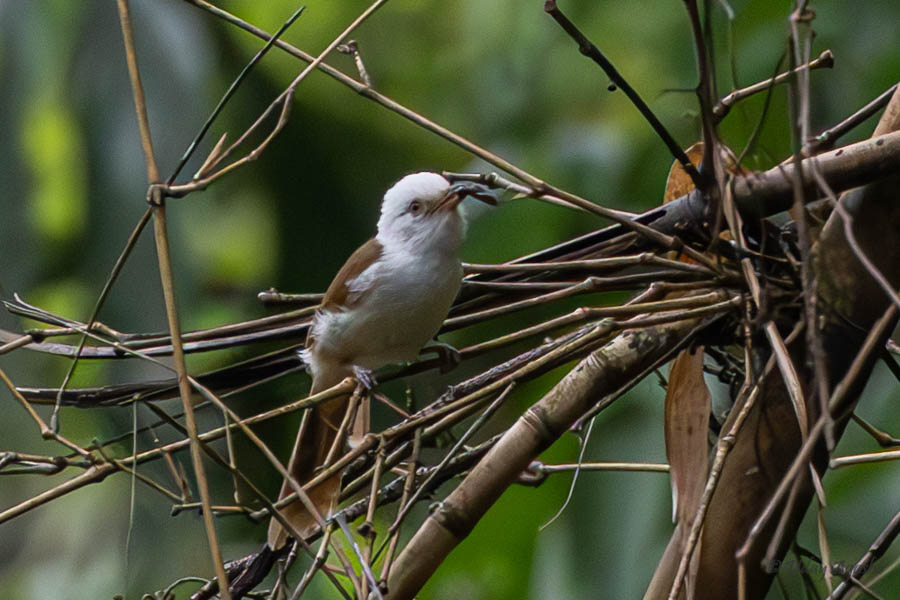
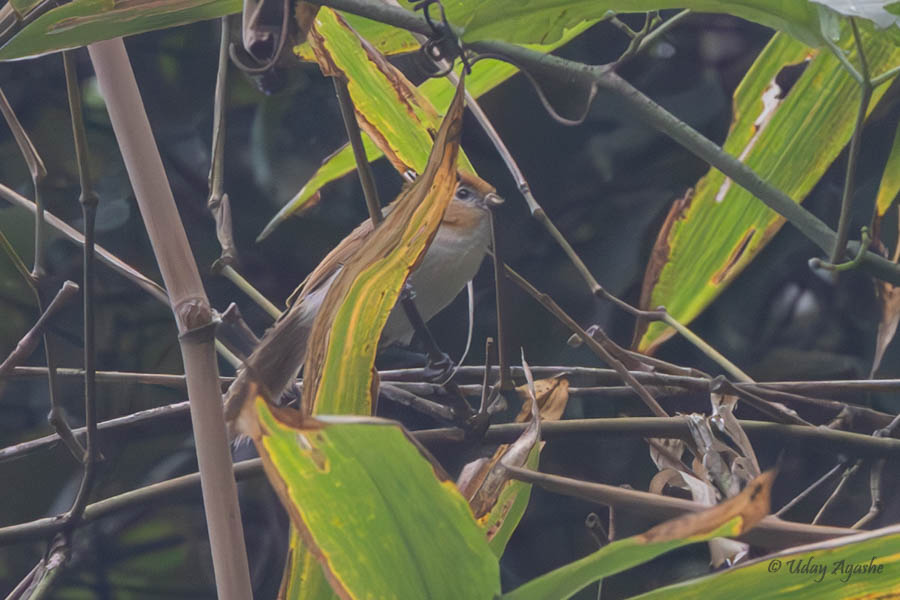
Today we did not venture for night birding (intermittent rains were there) and instead opted to take some rest. For tomorrow, the initial plan was the start as early as 4 (primarily to make up for poor birding today and also that we had to cover a lot of distance to reach Dirang for the night). Add to that, the weather forecast for tomorrow was not good.
But at dinner, Lobsang said we could leave by 4:30, our first target would be Temmincks Tragopan, and considering the time required to reach the spot, 4:30 was good enough.
Day 5 – Bompu to Dirang
Our alarms were set for 4 am today but I got up at 3:30 itself. Not able to sleep any further, I decided to step out of the tent (with a torch as it was dark outside) with brush/paste. I saw light inside the dining area, which meant I could make some tea. Just as I came out of the toilet block, it started raining.
We all got ready as planned but the rain was still on. Finally, at 5 am, it reduced a bit, so we decided to move out, our bags were already packed.
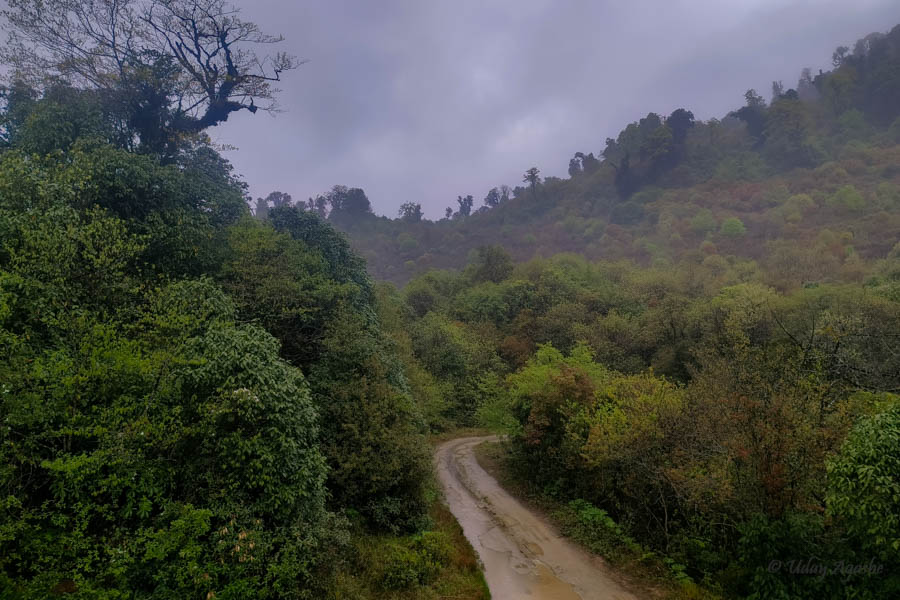

For Temmincks Tragopan, we were to reach a specific watch tower (close to the Lama camp) and we wanted to do birding on the way. But the weather had different plans altogether. The poor roads were by now flooded with rainwater, so we had to be extra careful. And to add to it, one of our vehicles developed an issue with the silencer pipe (it broke).
As the rain was still on, we could not even stop for birding on the way. By the time we reached the watch tower, there weather had not improved at all. So we decided to have breakfast first.
After breakfast, we decided to go out and try our luck. As there were no signs of the Tragopan, we went for other birds. Well prepared for the rains.
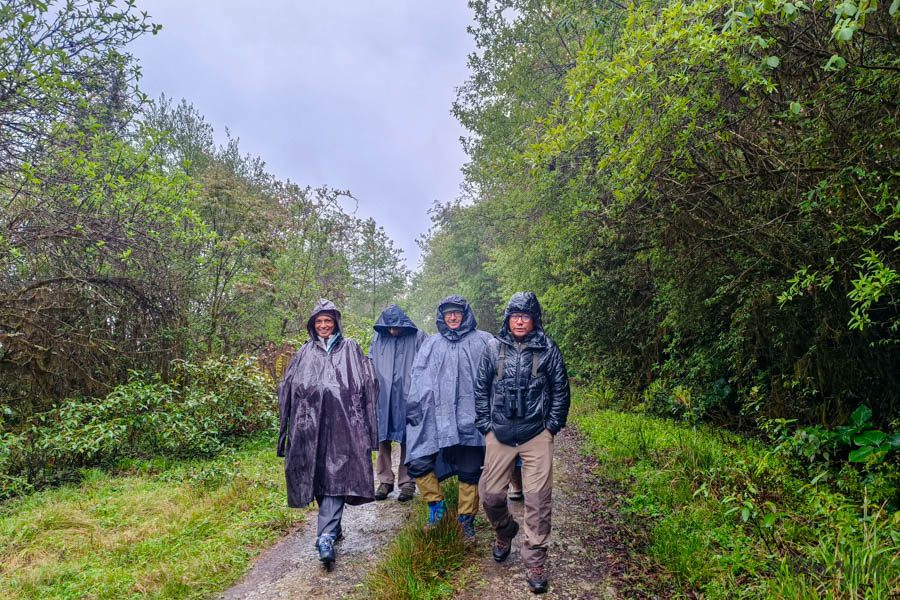
I did not even carry my camera this time. There were a few birds seen here but nothing special anyway. Time was running out and the rain was incessant, we all decided to move out and try our luck at the Bugun area once again. It was at a lower altitude so hopefully the rain won’t be as much. For lunch, we were anyway planning to stop at Lobsang’s house, so we took our chance and went to the Glow Bari area.
We reached there by 9 am but the weather here wasn’t any good. The drizzle continued here as well. We still braved on the trail but once again the birds decided to remain hidden. There were a few common birds like Sibias, Drongos, and Cuckoos that were seen but nothing that we could take photos of. Oh, not to forget, I managed to get a decent photo of the Bhutan Laughingthrush this time.

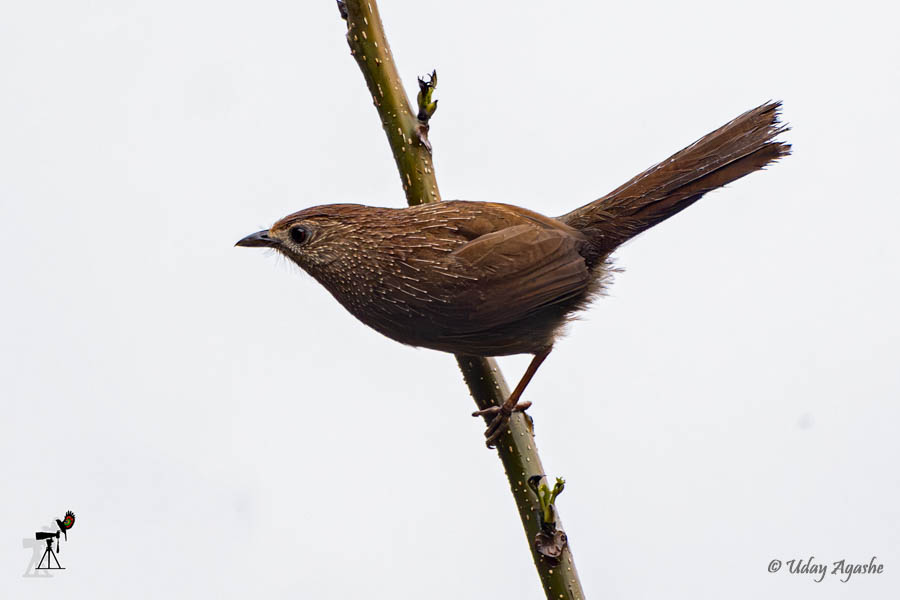
We had planned for a noon time lunch, but we were at Lobsang’s house at 10:30 itself. But within half an hour, lovely local food was ready. We all just loved it. Not just homemade, most of the things were produced on their farm too.
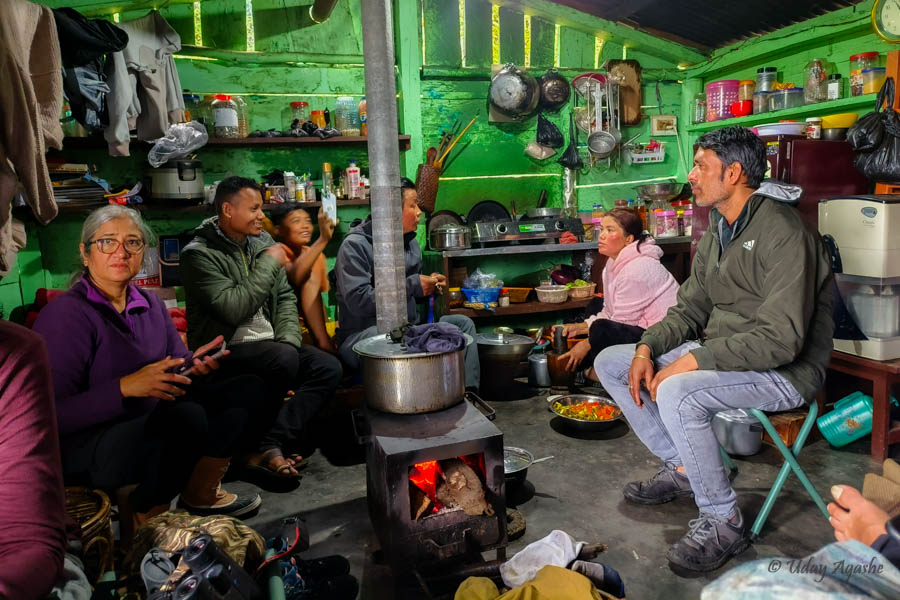
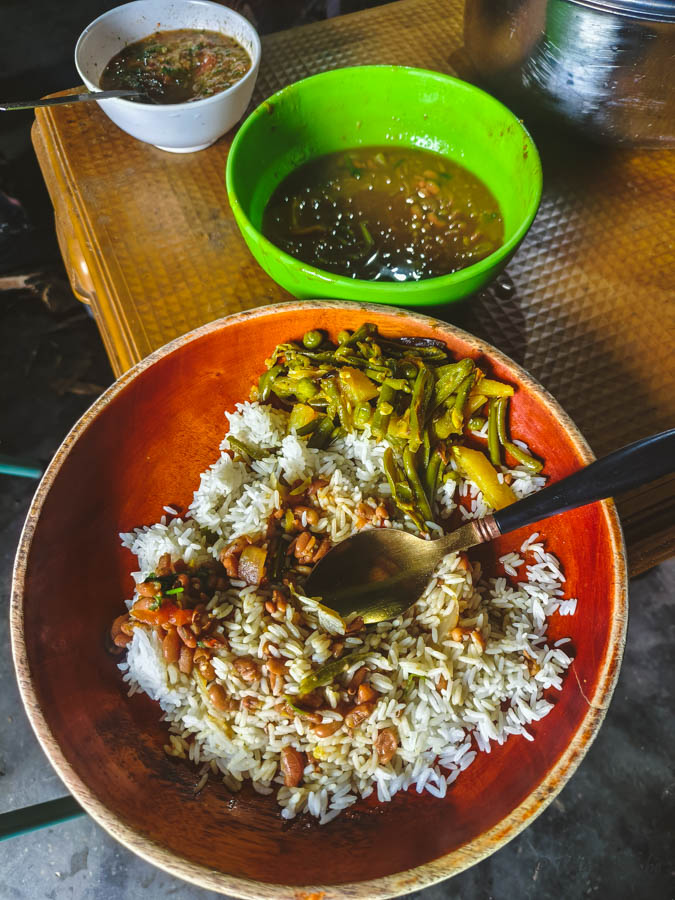
After a relaxed lunch, we started our journey towards Dirang by noon. Before reaching the hotel there, we had two scheduled stops for 2 lifers. The first on the list was the Long-billed Plover. A plover of fresh waters is resident in this region but a very difficult one to see (even when in plain sight).
We went straight to a riverfront in Rupa. Lobsang knew this place well but finding the bird was a problem anyway. Look at the habitat picture here to understand the difficulty. But Lobsang managed it really well, once sighted, we managed to track it for the next 10-15 minutes (before it flew far away). That was enough time for all of us to have our clicks.
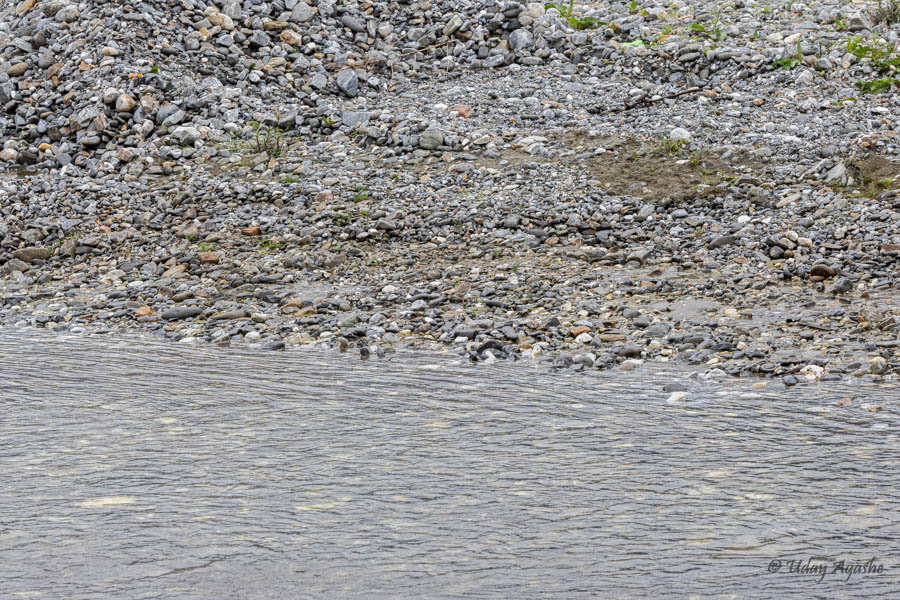

Our next target was the Black-tailed Crake but before we reached the spot, we stopped to photograph a cuckoo perched nicely at eye-level. This spot was somewhere on the Sera Wanghoo Road (from Rupa to Dirang). Good that we got down for the cuckoo, we managed to see another lifer there (Dark-sided Flycatcher). Here as well as in Rupa, the rain did not leave us but luckily the intensity was not much (you can see the raindrops in the cuckoo photo).
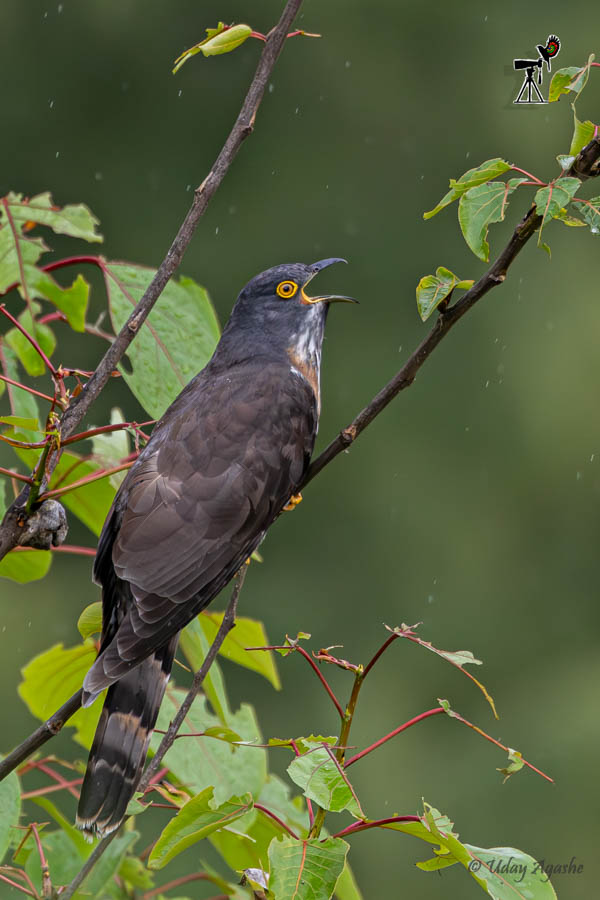
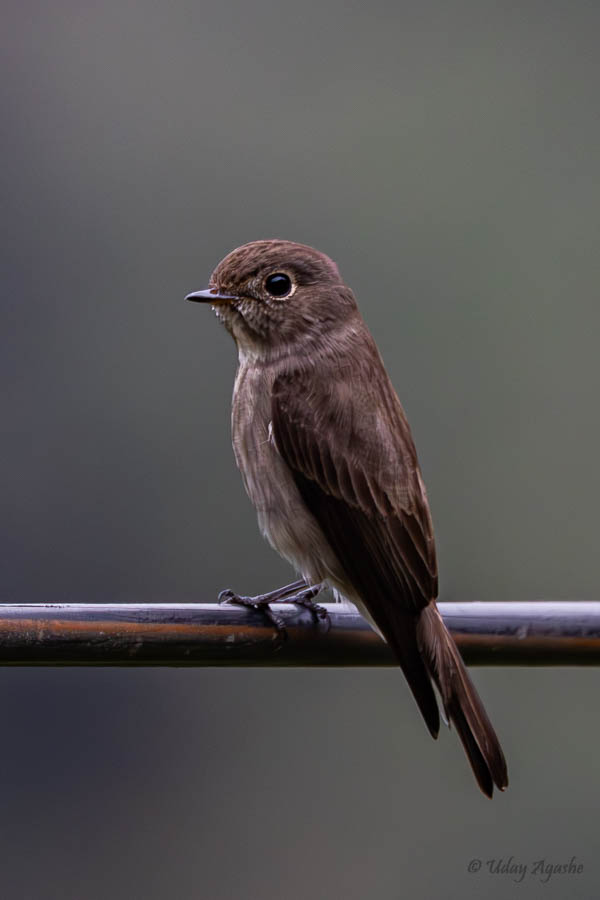
We now moved straight to the Barchipaam area for the crake, Our vehicles were stopped at the roadside and Lobsang went into a field. (the farming here is done on the hill slopes, stel-wise plain areas are used for this purpose). We waited patiently for 15-20 minutes but there were no signs. Finally, we could hear the bird's calls from the other end of the field. We quickly moved through the muddy path and managed to capture the pair of crakes.
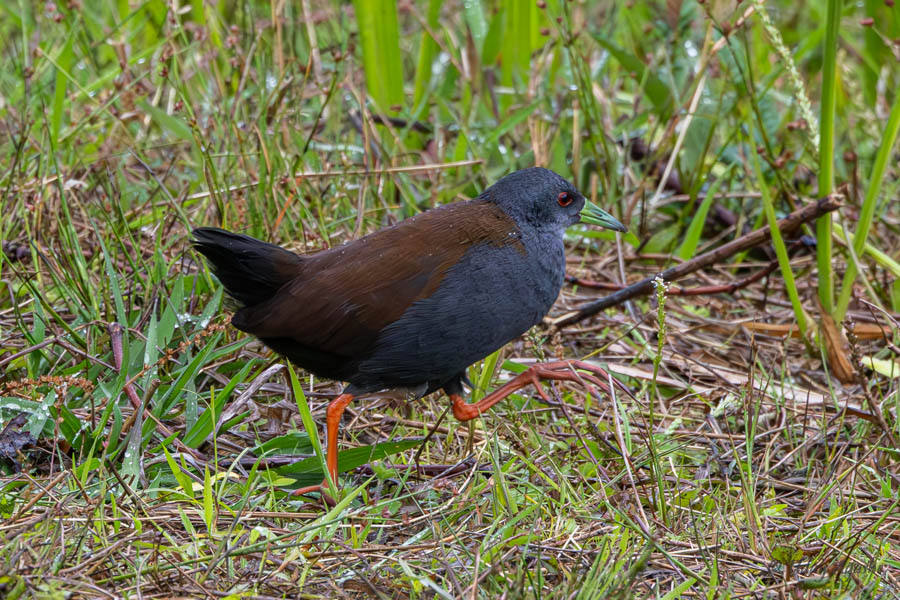

We tried some more birding in that area and also sighted the Russet Bush warbler once but could not get any photos. On the way to the town, we searched one more spot for the Wallcrepper but could not find it.
By 4:30, we finally reached Hotel Samdup Khang. Here we were planning to stay for 3 nights, so unpacked our bags at leisure. The hotel is nicely located on the river bank, from the back side you can have some fantastic views.

In the next 2 days, we planned to cover Mandal Top and Sela Pass. Sela being a little far, we had to leave by 4/4:30 (to reach the spot at daybreak, to get maximum bird sightings). Lobsang was to take a call based on weather conditions and current sightings. There was one other issue. The local petrol pump did not have electricity that day and hence we could not travel far. Finally, with this, we decided to do Mandal first and then Sela.
Day 6: Birding at Mandala Top
Today we had the usual 5 am start (with a packed breakfast). Before going to the Mandala top, we once again went to yesterday evening's spot close to the town. We wanted to try our luck with the Russet Bush Warbler. This session then went on for the next couple of hours. The Warbler gave us a lot of trouble. It kept moving close to us but through thick bushes, this went on for almost half an hour. Finally, we managed to get some photos. But the showstopper today was Mrs. Gould’s Sunbird. It was perched close to us and gave so many poses, that everyone managed to get good photos.
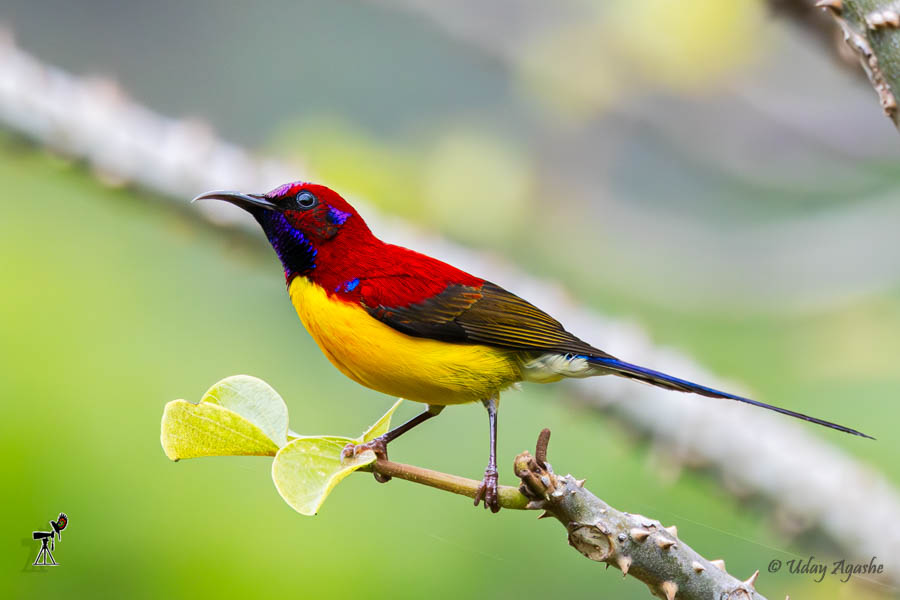
We decided to have breakfast first and then proceed to Mandala. One interesting observation here was when we accidentally dropped one boiled egg on the roadside. One pet dog was walking with its owners. That dog smelled the egg and finished it within no time.
On the way to Mandal, we had just one stop. This was because of a cuckoo seen on the transmission wire. And while we were photographing it, another cuckoo decided to perch on the opposite side of the road.
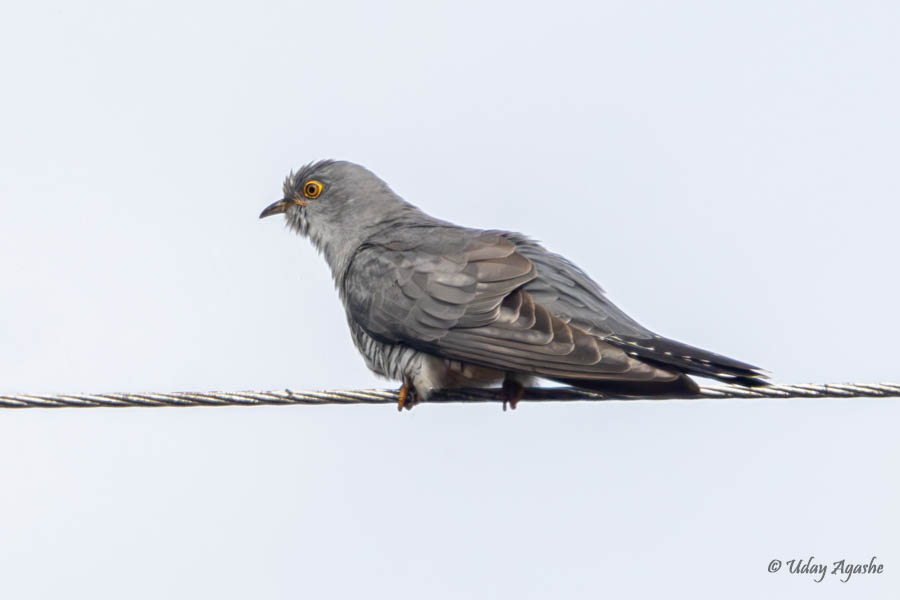
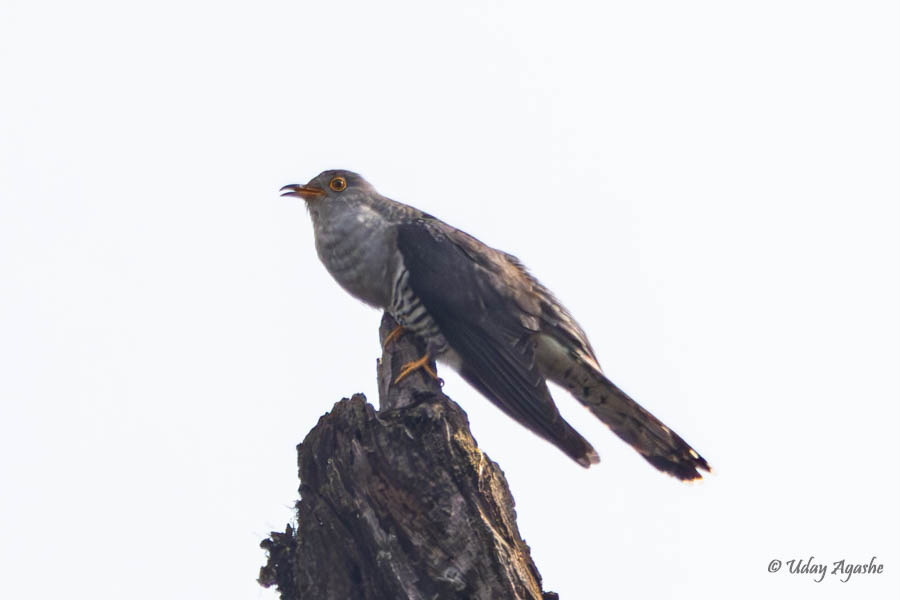
By 8 am, we were close to the Mandala town on the hills. Once again, throughout the day, we did a lot of small walking trails (and in between, used our vehicles to cover distances). On the first trail, we saw a few warbler species (Buff-throated and Brownish-flanked). We also saw a Long-tailed Shrike on a wire (common in Mumbai too). Although there were a few birds seen, our guides were not very happy with the sightings. Once again, the weather was not that good. All through the morning, it was cloudy and after lunch, the rains started.

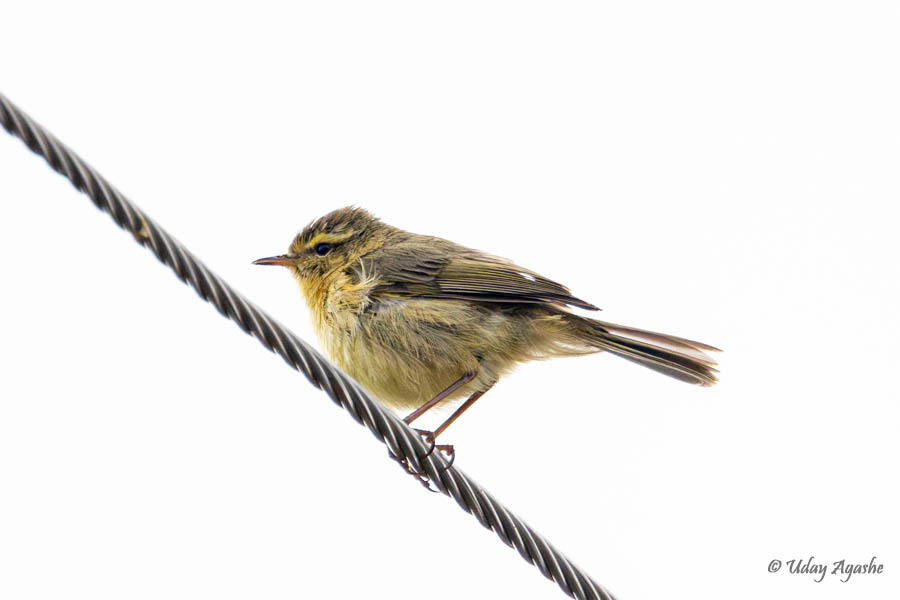
As we moved further up the hill, the habitat became a little different and so we expected different bird species. We could see a mixed flock of Yuhinas (Stripe-throated and Rufous-vented) dancing on a nearby rhododendron tree. We could hear various cuckoo calls all through the day. Here we all were alerted by woodpecker calls and this turned out to be the Rufous-bellied Woodpecker. We even saw a Eurasian Nutcracker flying past us.
One more small bird attracted our attention during that trail. It was the beautiful Rufous-fronted Bushtit. It was close to us but kept hopping from perch to perch. It was nice to observe its fast movement and simultaneous calls.
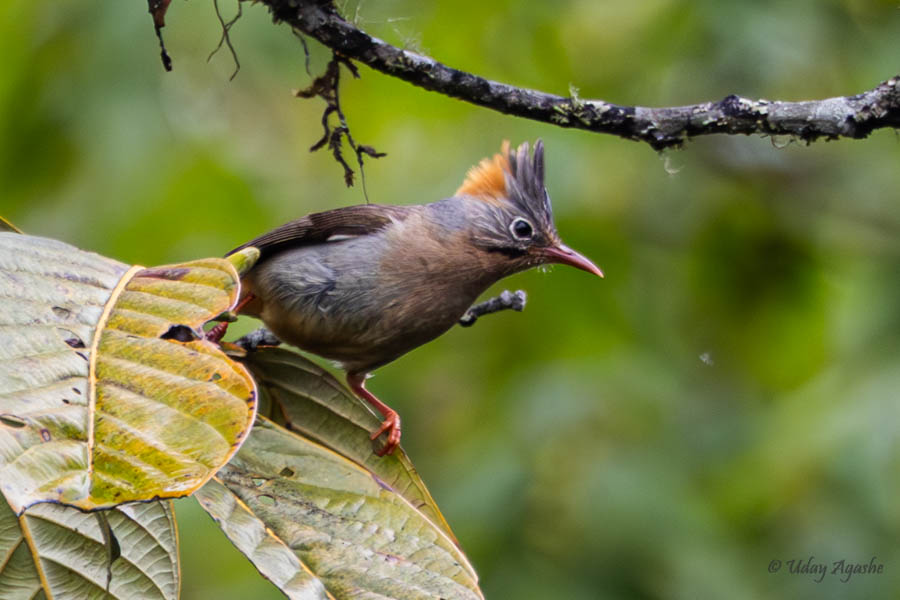


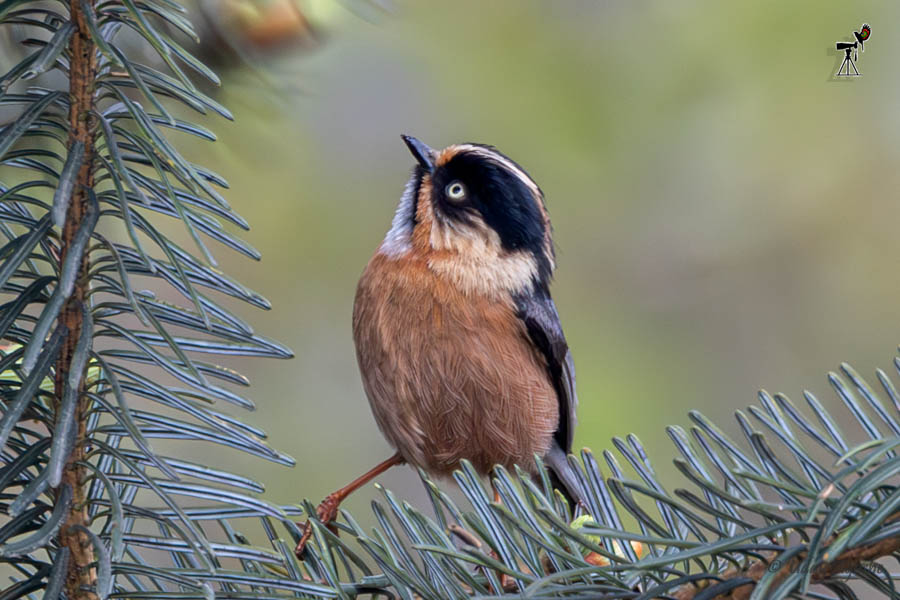
At one point while traveling, we saw a few birders and guides waiting right on the road. Understanding the signal, we stopped our vehicle keeping some distance, and slowly walked near them (it was drizzling a bit so we had our camera rain-covers on). We could sense that the wait was for the Temminck’s Tragopan. On further inquiry, we got that the tragopan was trying to cross the road (from the valley towards the hill), but a truck moving on the road disturbed its movement and it went back. These guys were expecting it to come back again and they were here for more than 40 minutes.
We joined them too but I did not have much patience (one reason was the ongoing rain and secondly my gut feeling was, that it was not going to come back soon, we were better off searching for other birds instead). Luckily those guys decided to move on, then within 10 minutes, even we followed suit.

For lunch, we did not have much choice there. There were a couple of food joints (one of them was closed at that time) and the best we could get there was Maggi Noodles supported by Omlet. After lunch (around 1 pm), the rain had become more intense.
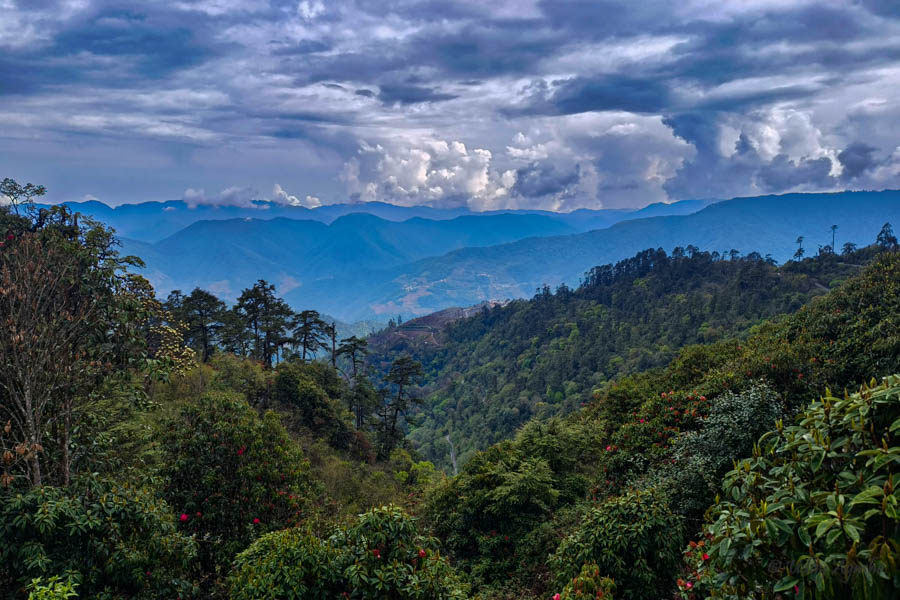
But even in that rain, Lobsang took us to one particular spot for Hodgson;s treecreeper. On reaching there, he just had to search a couple of trees and he found the bird. I did not venture out of the vehicles because of the rain (not a lifer for me) but others got good photos.
From there on, we made another unsuccessful attempt for the Tragopan. Our further walks got us a few more species like the Blackbird, Nutcrackers, and Minlas, but there were no exciting sightings.
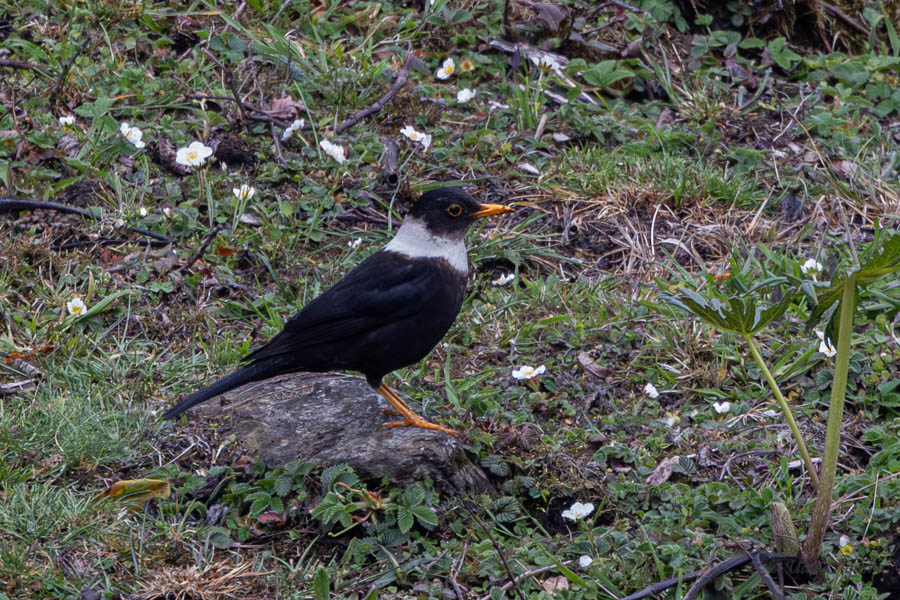
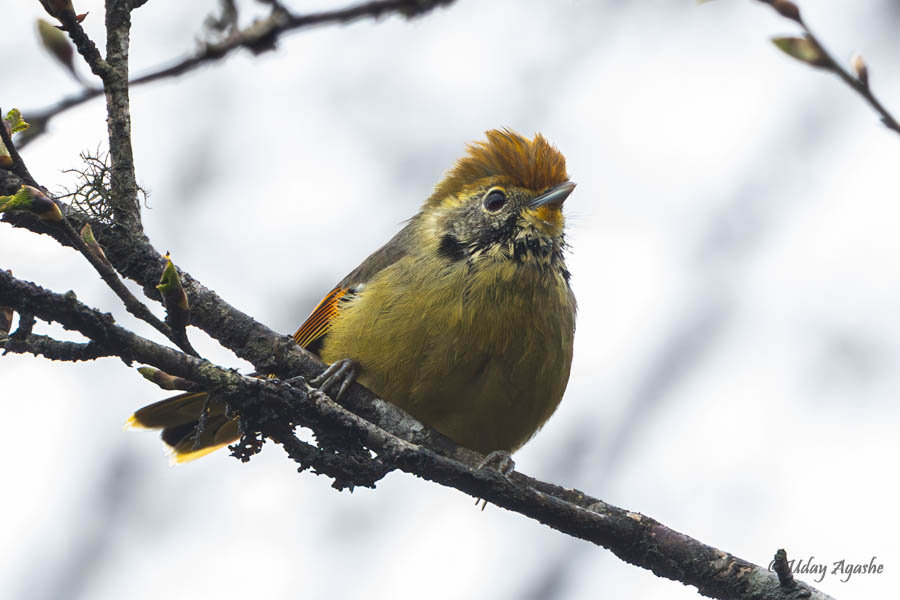

As the rain was not stopping, we decided to return to the hotel by 3:30. But halfway down the ghats, we could sense some bird activity, it wasn’t raining there either. As we got our binoculars, a lot of bird species were seen (Barbets, bulbuls, yellow-cheeked tit, nuthatch, some warblers, and flycatchers were sighted).
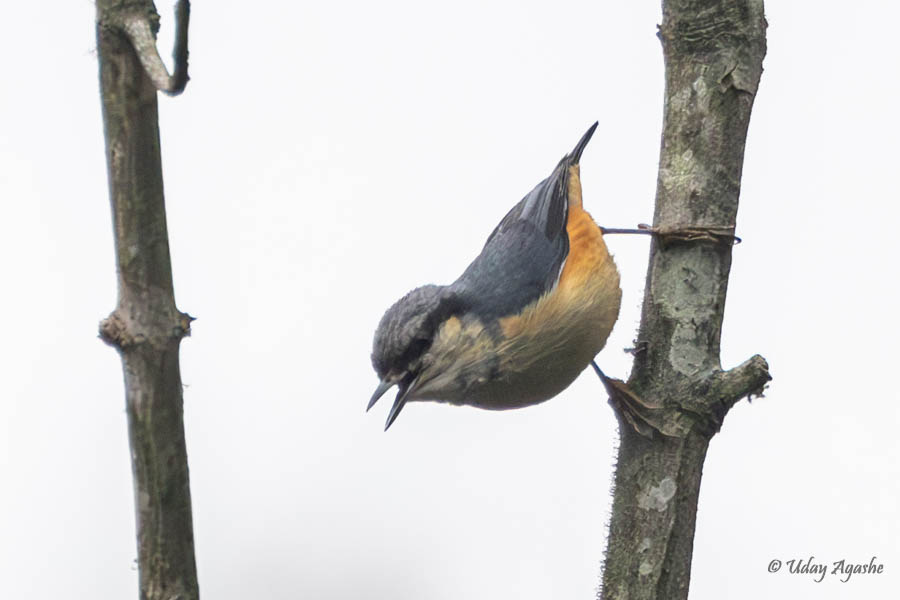

Before going to the hotel, we once again tried searching the Wallcreeper without any luck. But today the petrol pump was working and we could get the tanks full. If nothing else, this ensured our Sela Pass trip tomorrow. I had heard a lot about the snow at Sela Pass and the special birds that were sighted there, hopefully, the weather won’t be as bad as it was the last few days.
Day 7: High Altitude Birding at Sela Pass
We started the day at 4. The good part is, the hotel guys were able to provide tea/biscuits at that hour. We had about 2 hours journey to reach Sela, time to catch up on some sleep.
The same road goes to Tawang and a lot of tourists take this route. With recent road work done by BRO (Border Roads Organization), travelers to Tawang can now bypass the Sela Pass (at an Altitude of 12,700 feet). The three tunnels built on the route are probably used by the Army as well.
As our primary birding location was Sela Pass, we did not take the bypass and went straight up the ghats. The daylight just started getting there when we were close to the top. The air was considerably cooler and the snow cover on the roadside was visible. We were prepared for the sub-zero temperatures anyway but handling the camera while using gloves is a tough task.
At one of the turns, Lobsang signaled to get down. The fog was causing reduced visibility but we could see some bird activity near the tree tops. Even in that low light, Lobsang identified the Red-headed and Grey-headed Bullfinches.
In that foggy air, we saw one Fire-tailed Sunbird that was playfully moving on the treetops.
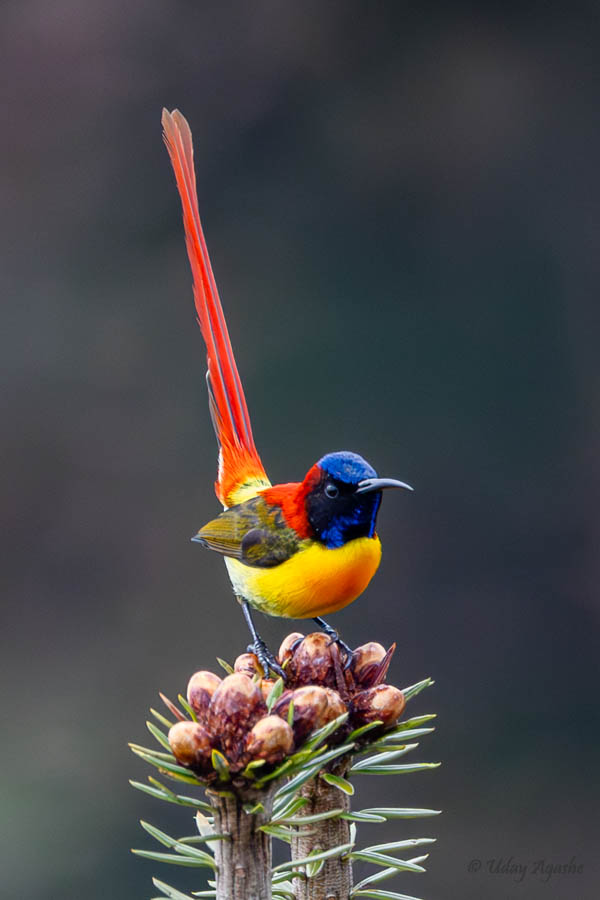
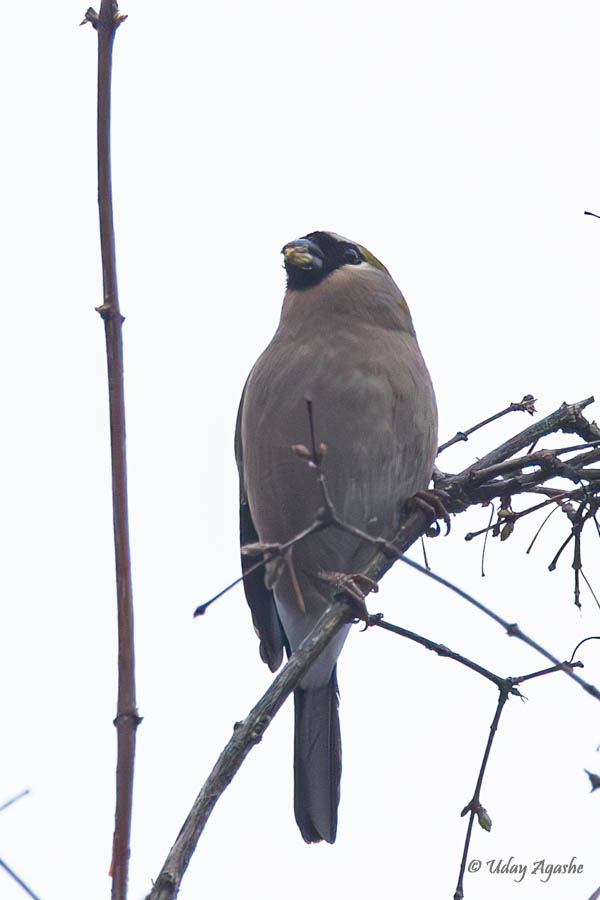
Whenever the fog cleared a bit, we could see the beautiful snow-clad mountains.


We kept walking up as the bird activity was seen on every corner there. The small birds were a little difficult to photograph in that light but it was fascinating to watch them move freely in that cold weather. After the bullfinches, we saw some Accentors and Warblers there.
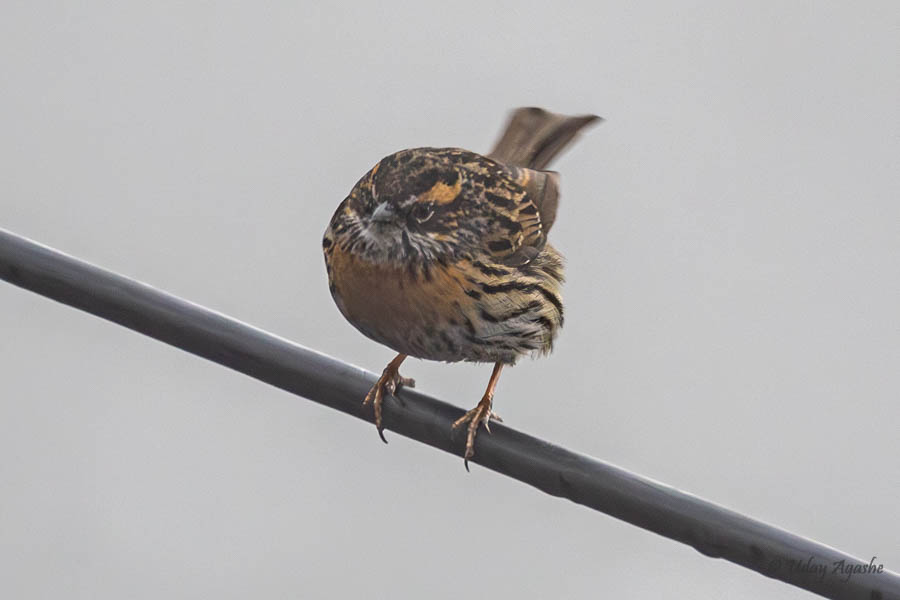
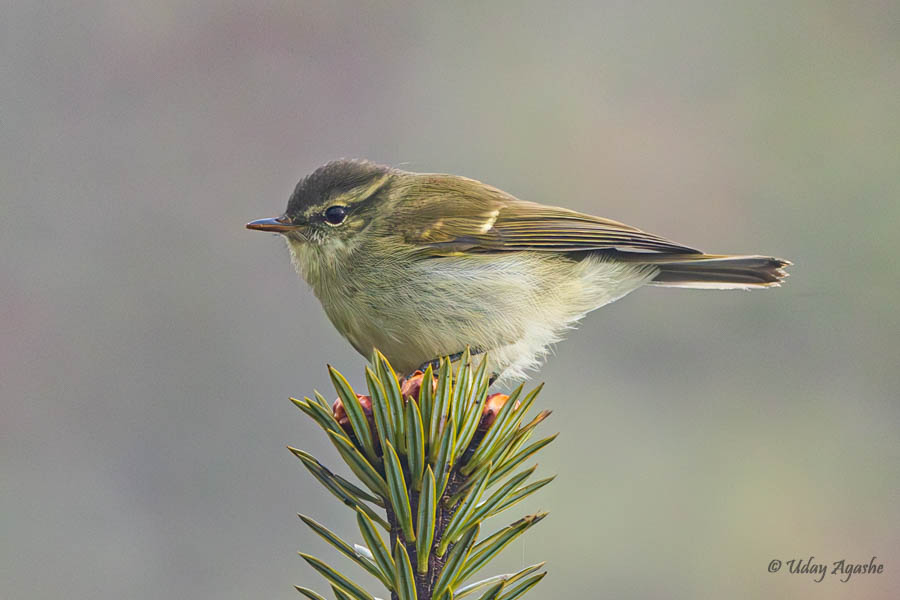
Just around the corner, Lobsang sighted a few rosefinches. There were the Himalayan Beautiful Rosefinches and the Himalayan White-browed Rosefinches there.

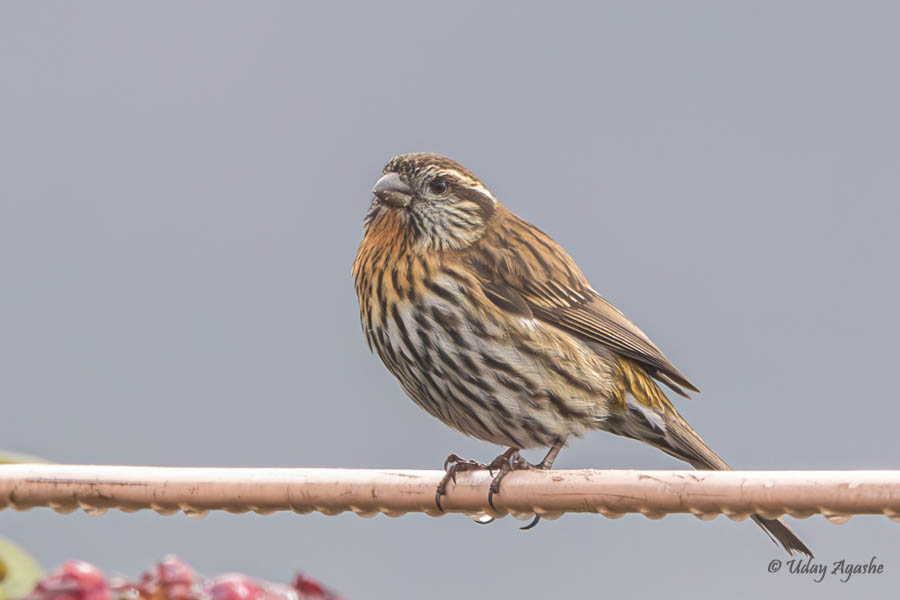
We all liked the activity there but we still had to cover more species, so we all moved towards the top. The plan was to have breakfast there. With the snow all around, some of us had got gumboots and that was the right time to change the footwear. But while we were doing it, there was some commotion with the other birders already standing there. They had seen a few Snow Partridges nearby. I had just changed to gumboots and quickly ran with my camera (at the maximum speed possible on the snow). The excitement was such that Shakuntala did not even have time to change both shoes (check the photo).

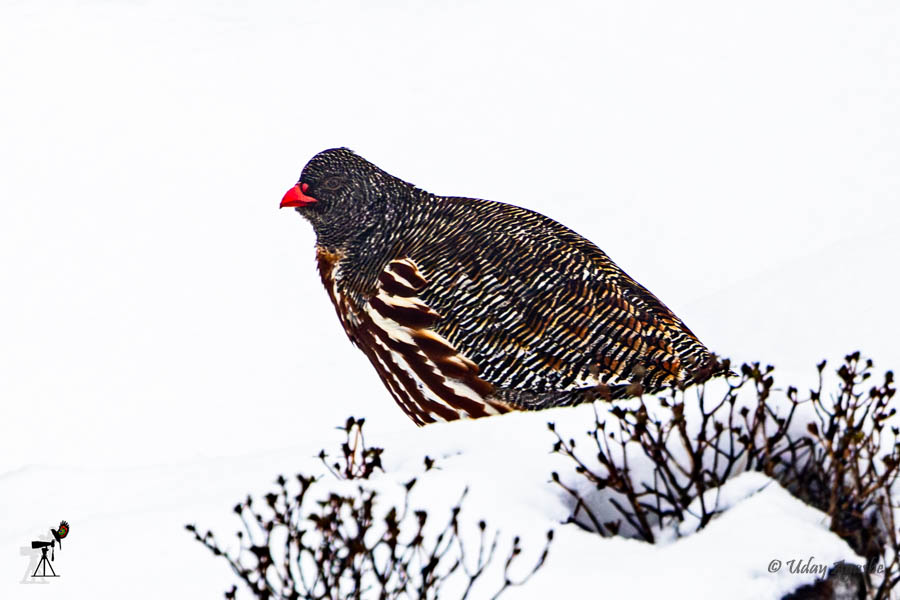
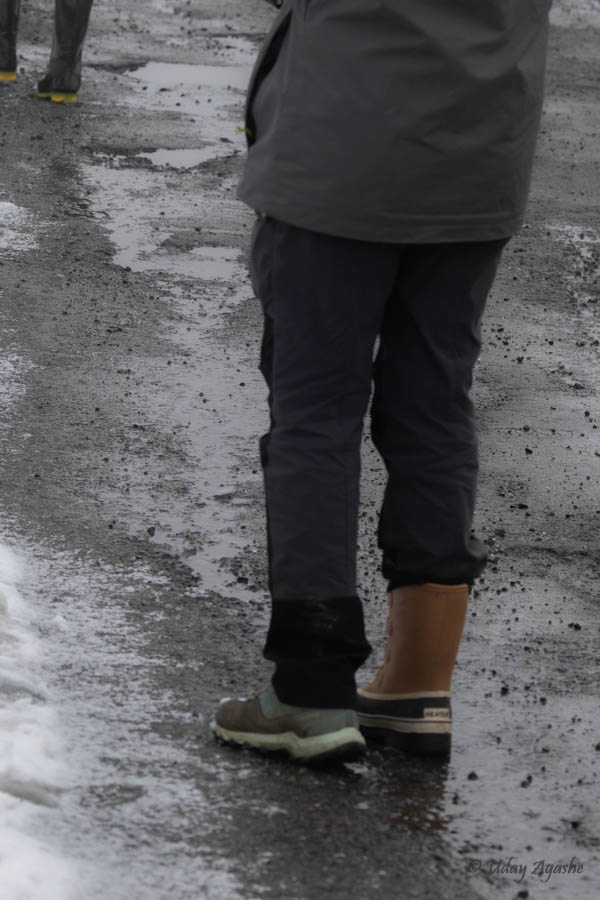
After breakfast, we moved towards a lake near the pass. There was snow all around it, but the lake still had liquid water. Generally, there are multiple Grandala seen around this place but today there were none. Just then Lobsang got a piece of news from another guide that the Himalayan Monals were sighted by them. Hearing that, we quickly turned back and went down in search. At the prescribed location, we got down. It was hazy but Lobsang pointed towards the hillside where we could see a couple of birds dashing through the trees. We could hardly make out the shape/size, I quickly pointed my camera in that direction and took a few shots of the moving objects.
As the birds were moving upwards, Lobsang signaled us to get into the vehicles and we sped up again. A few turns later, our front vehicle applied sudden brakes (so much so that we almost collided). The Monal was right in front of them but it did not give any time and quickly flew away. From our vehicle, we could only see the hurried flight. That was the end of it, despite searching for another half hour, we did not see them again. From there, we moved to the other side of the Sela Pass.
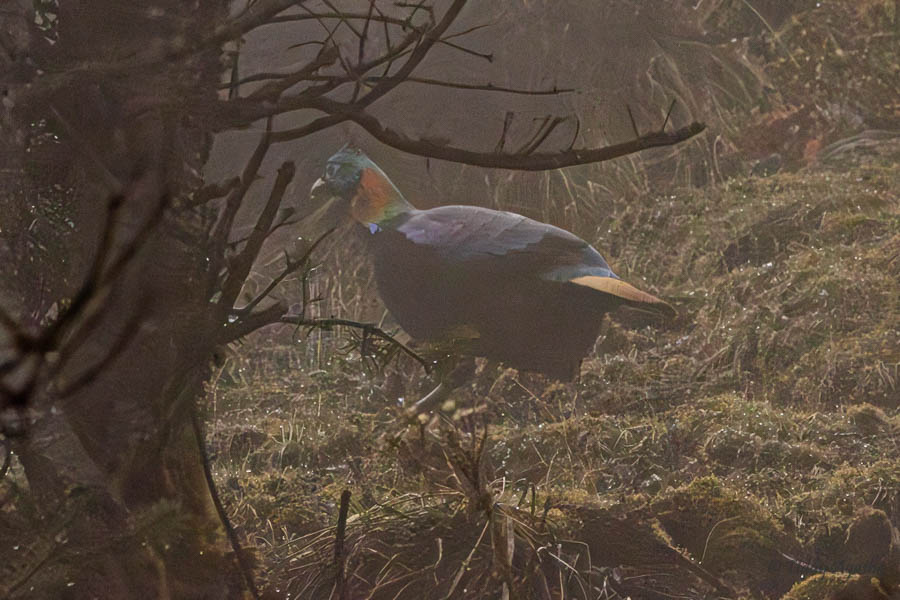
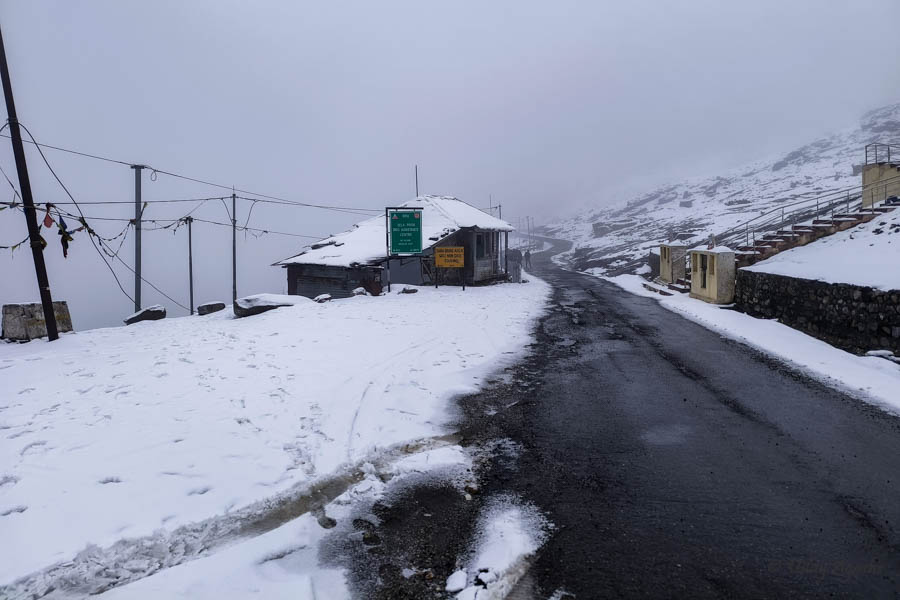
We checked the lake area but there were no Grandals yet, moving ahead we managed to see a couple of pigeons. These were the Snow Pigeons (A little bulky cousin to our city Pigeons). We followed their flight path and managed to get some photos from close. On the other side of the hill, there was a small, dark bird moving in the bushes. Once again we waited patiently for the Wren to come out in the open, and soon the bird obliged by giving some nice poses. Little ahead on the valley side, there was a white-capped redstart posing in the nice light.
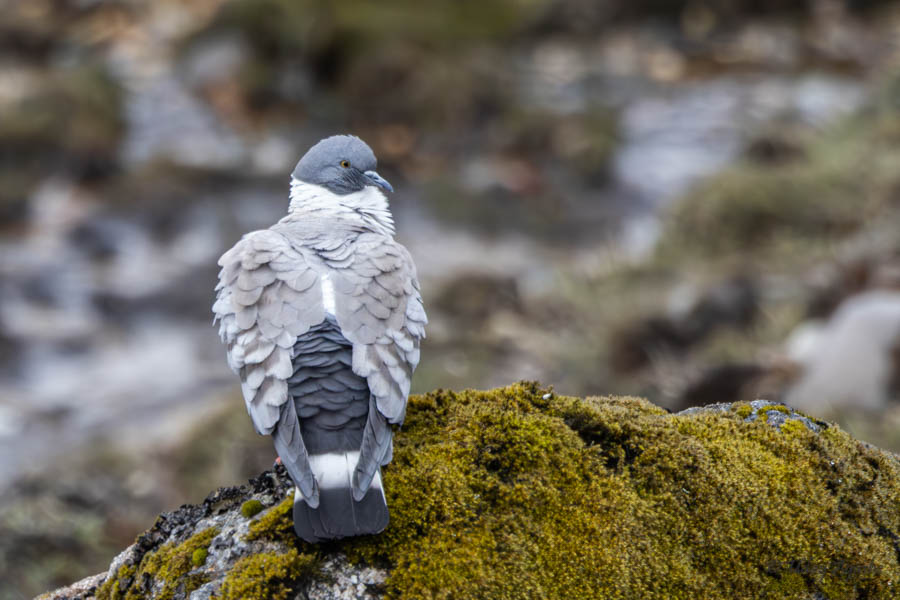

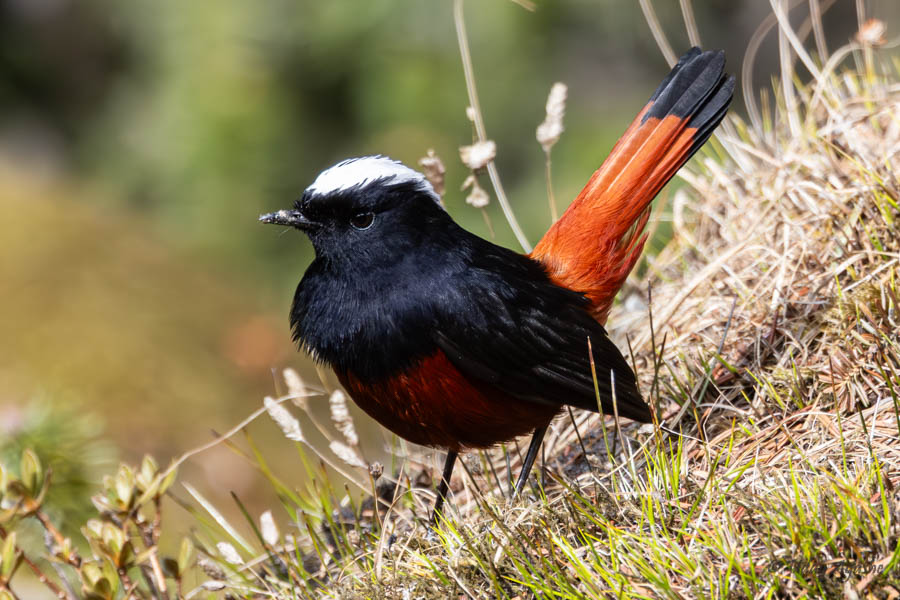
On the hillside, we could sense some activity. The birds were far but the nice blue of the grandala was impossible to miss. As we were busy taking photos of the foraging pair, Lobsang got the news of a Tibetan Blackbird sighting near the lake. This was one of the rarities, so we all got to the vehicles and once again drove to the lake area.
We could see some birders in action, so without asking anyone we got the direction of the bird. Initially, we saw the female blackbird but soon even the male was seen. On the opposite side, there was snow, and on the snow, a Grandala! Now we were confused, about where to focus our cameras. Thankfully, the birds were friendly and we managed to capture both sides. This place suddenly turned lively, as a few more Grandalas joined in. Not just that, within the next 10 minutes, we could see and capture the Plain & Black-headed Mountain Finches, Alpine & Rufous-breasted Accentors, and Himalayan White-browed Rosefinches.


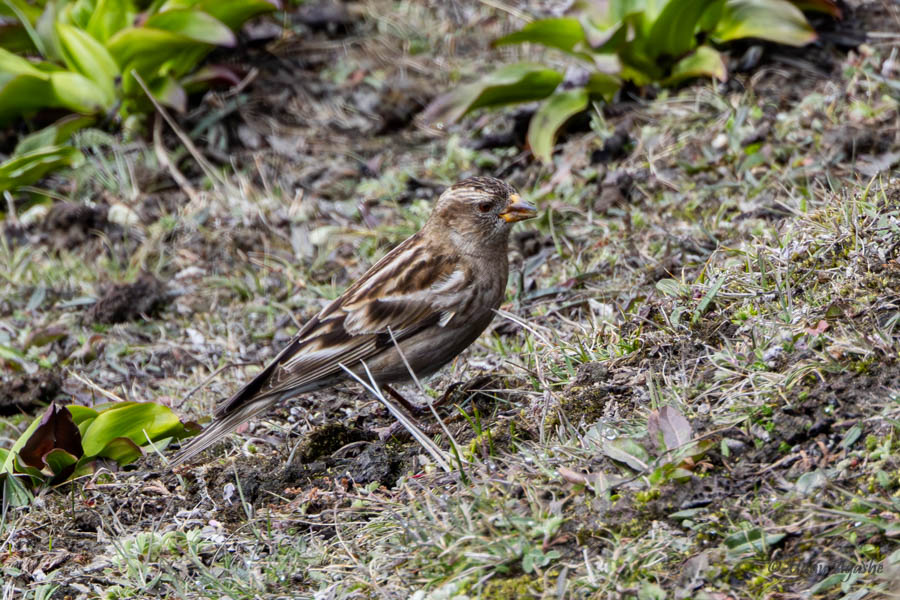
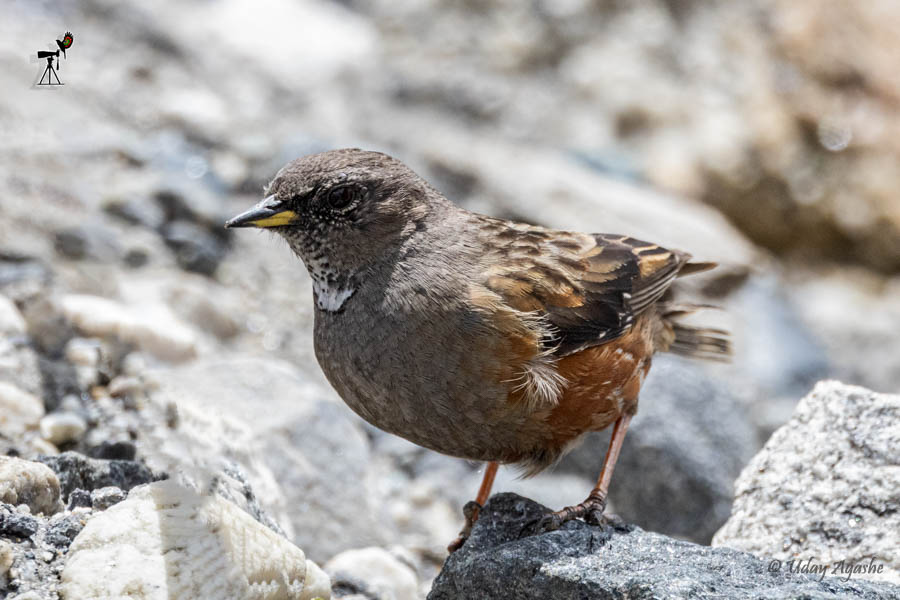
With that lovely experience, our spirits were really high (compared to all the earlier days, this half-hour looked more productive). Lobsang then took us on a snow trail. We left the vehicles right in the middle of the snow and started walking towards more snow. The white snow and the fog around meant there was hardly any visibility, but we were exploring this area for Gould’s Shortwing. Walking through the snow at that altitude (12700 feet) was challenging but we were moving very slowly. Even then it was tiring.
To my surprise, even in that thick snow cover, a pair of Snow Partridges were perched nicely on the edge. But other than these 2 birds, we could not see any other activity there. After walking some more, we turned back.
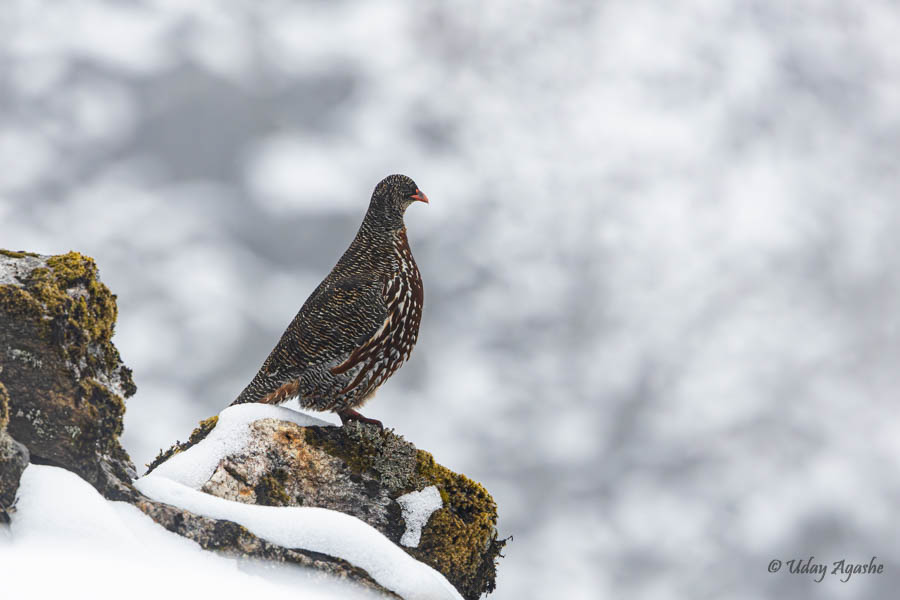
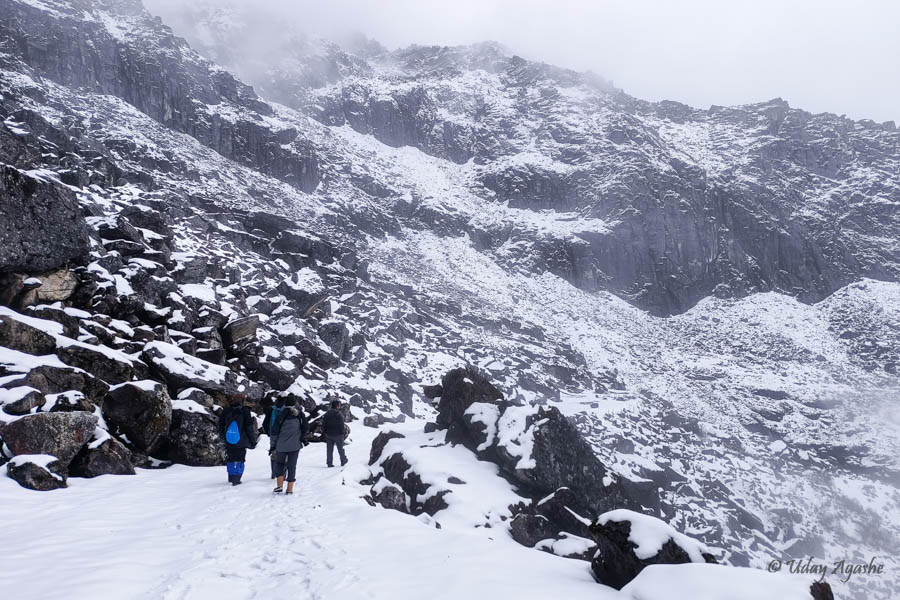
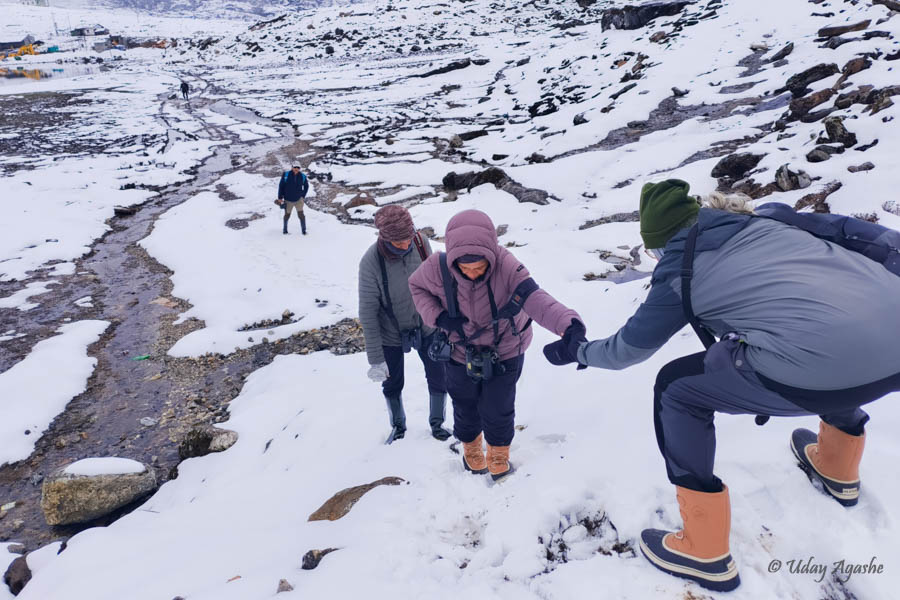

Coming back from the trail, Lobsang had another target in mind. It was the White-browed Tit-Warbler. For that we had to do another trek, this time on the bare rocks (no snow) but after the snow trail, I was feeling tired and hence decided not to join them. They had a stiff trail but managed to ger good photographs of the bird.
My decision to not go on the trail turned out to be right because soon I started feeling uneasy. Was not sure what was happening as I was feeling tired, disoriented, and had some headache too. All symptoms point to the Altitude sickness. With that, all took a call to go to a little lower altitude and have the lunch break. The thinking was “Some rest at a lower altitude may help me”.
Once again, we had Maggi and Omlet for lunch, but I could hardly eat anything. A glass of hot water helped a bit. By then the rain had started here too.
We still had a few possible targets, so we took 2-3 stops on the way back (for Solitary Snipe and Blood Pheasants) but due to the rains, we could not spend much time at any of the spots. With that, we decided to close the day and started descending from the Pass. On the way, we stopped at one place for tea and as we got to lower altitude, even the rain was less intense. But unfortunately, the birding areas were all on the top.
We reached the hotel a little early today (by 4:30). In the evening, we discussed tomorrow’s plan. From Dirang to Guwahati airport (via Bomdila Pass), we had to cover a long distance and the travel was easily 9 hours, plus a couple of birding breaks. We had to reach the airport by 4 pm. Back-tracking from that, we thought of starting at 4 am. The idea was to visit one more birding spot in Guwahati for the Malayan Night Heron (there were some recent sighting reports).
Day 8: Unexpected Lifers
By dinner time yesterday, the plan changed to a 4:30 start and we all were ready by that time. We started on the Bomdila Pass road and till around day-break drove non-stop.
As the daylight was seen, we got down a couple of times for known birding locations on the road. Our primary target was the Large Blue Flycatcher. But in the process, we managed to capture the Silver-eared Mesias, Yuhinas, and some cuckoos too.
At our 3rd stop point, Deepak found a bluish bird and took a few photos. I barely managed to get the bird while it flew away. Lobsang confirmed it was indeed the Large Blue Flycatcher. Thrilled as we were, there was another birdcall. This time it was the Buff-chested Babbler. This one continued to move only around a small area allowing everyone to get good photos.

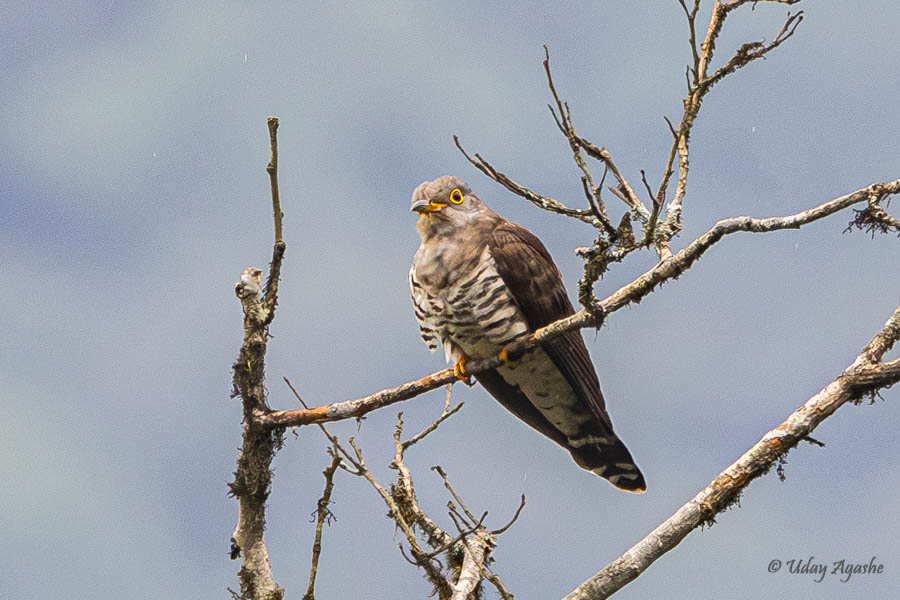


We ended up spending a lot of time in all this birding activity, so at lunchtime, we decided to drop the Heron plan and head straight to the Airport instead.
We were well on time at the airport and the flight was on schedule too. Evening Mumbai traffic was bad as usual and I reached home just before midnight (today happened to be my birthday.. and thanks to my fellow birders, we had a small celebration at the Hotel in Dirang in the morning).
Conclusion
It was a great birding trip overall. With good weather, we would have got more species and better photos too. One thing I learned during discussions is that mid-April is a better season to do birding here. It might be colder but less chance of rain (and therefore fewer Leeches too).

Please note: For the blog, I have used some photos taken by my fellow trip-mates.